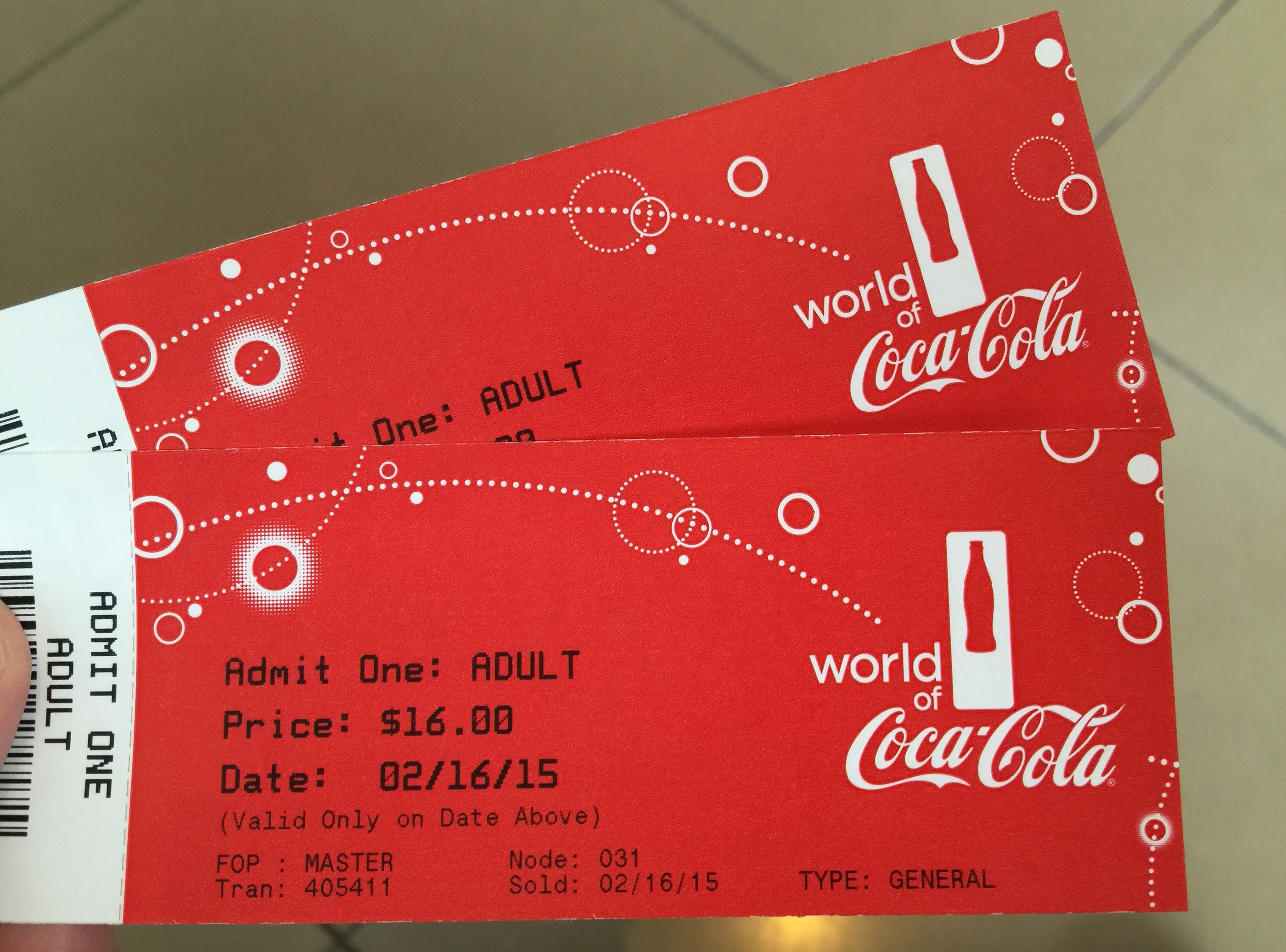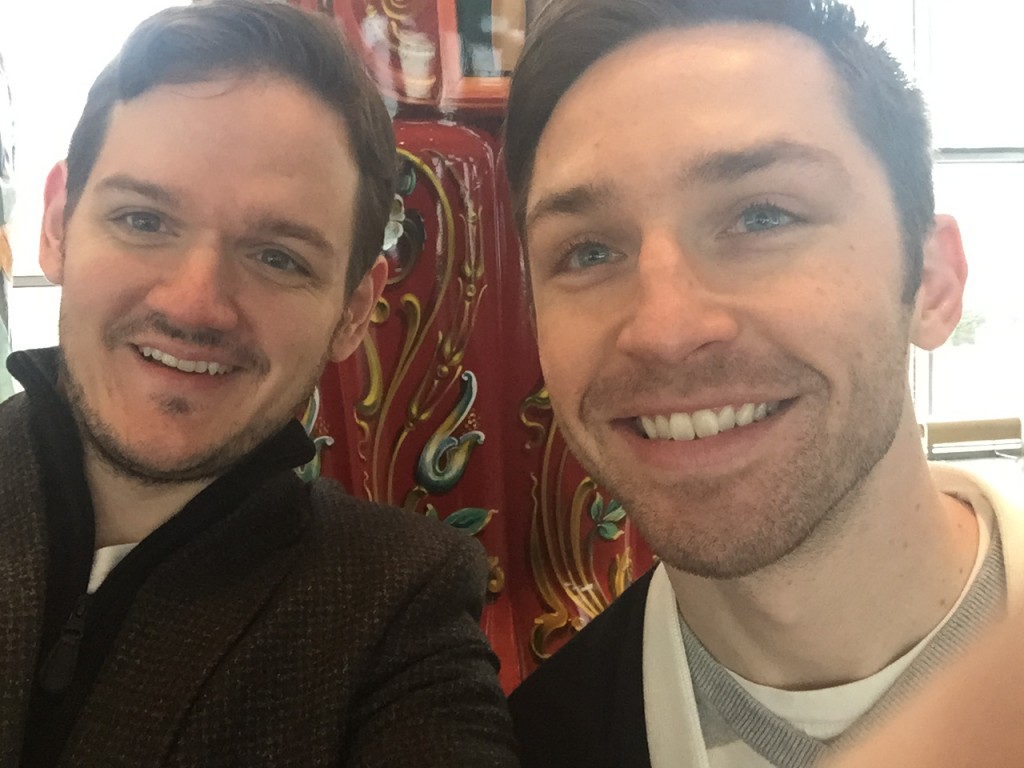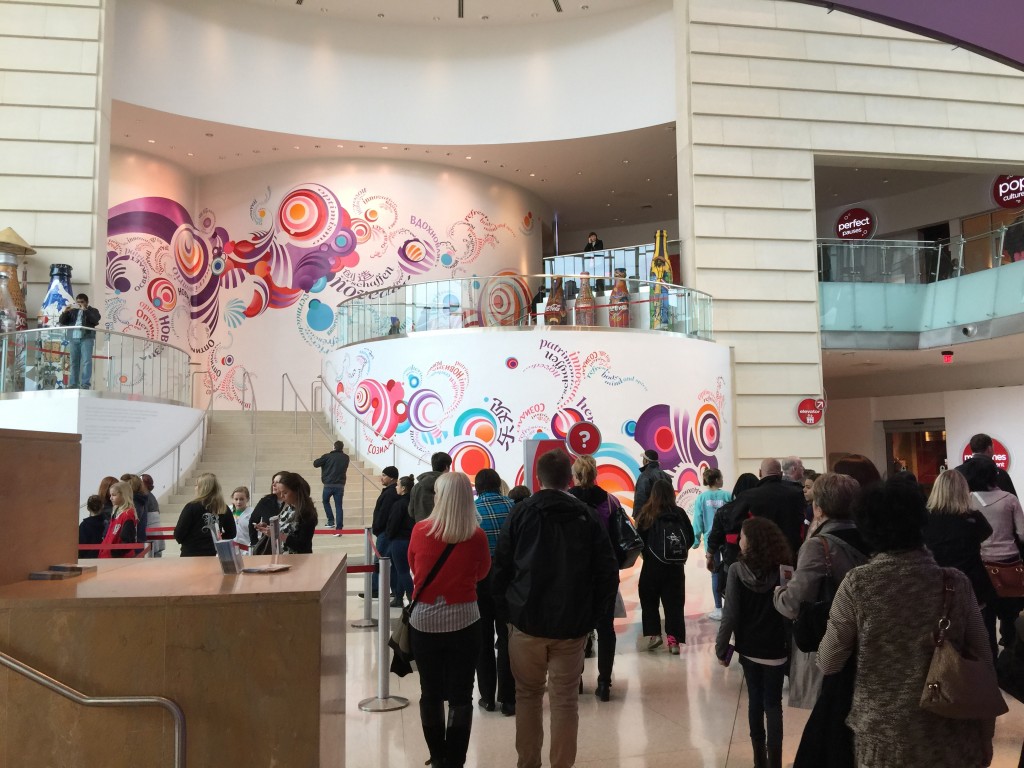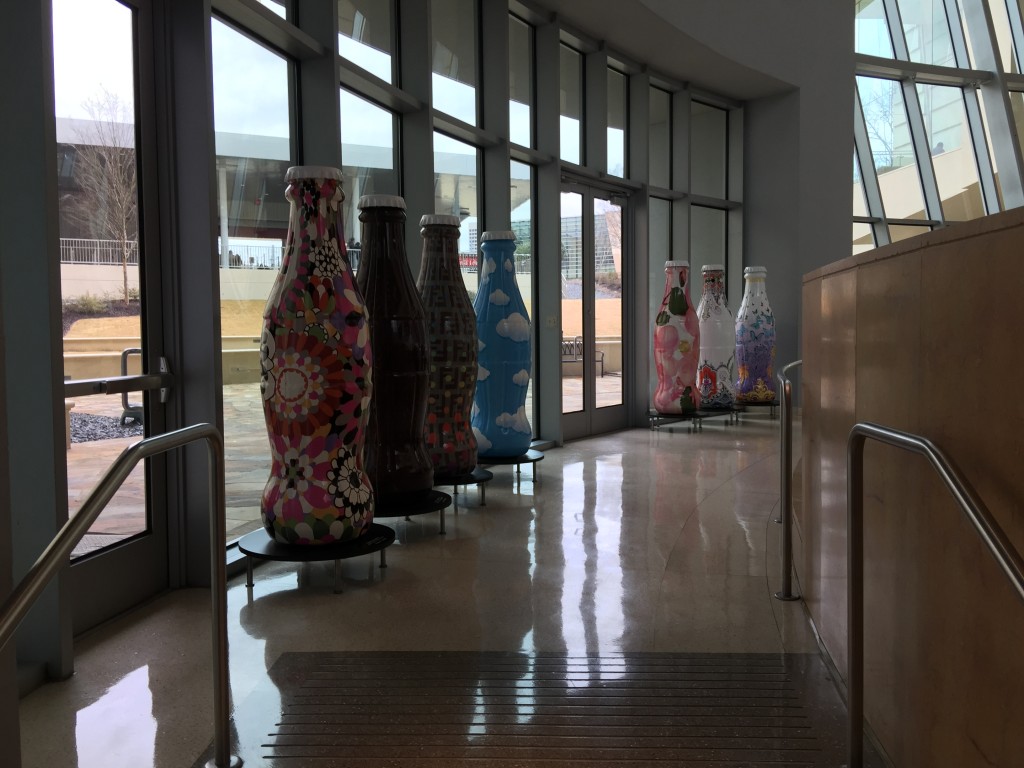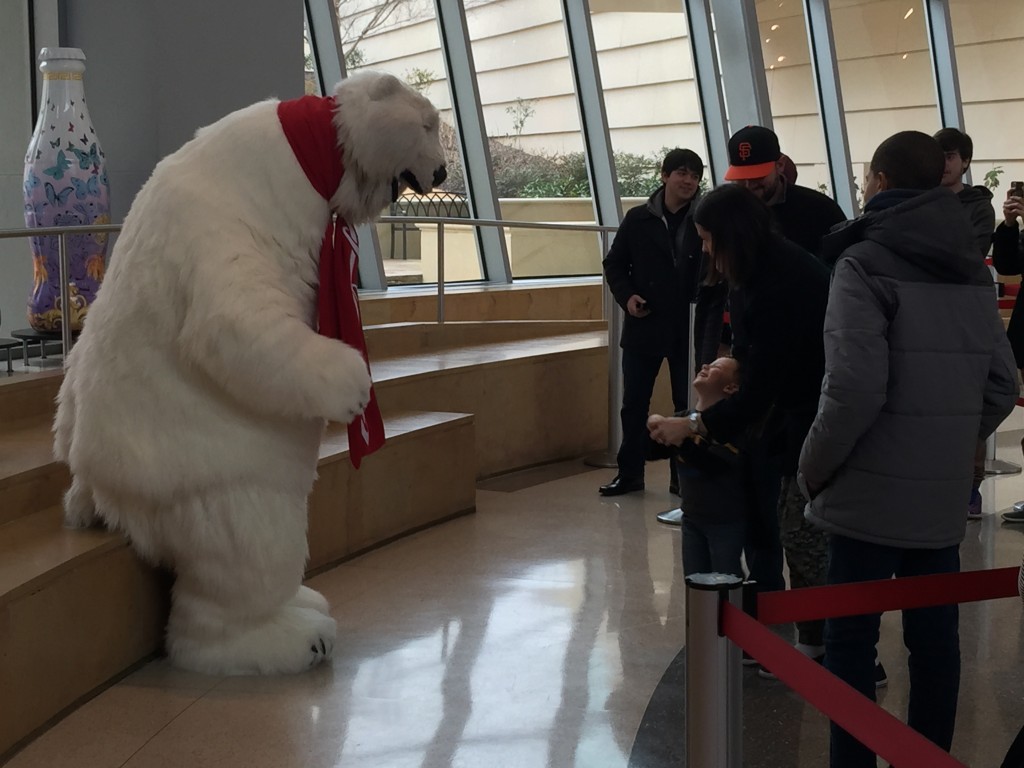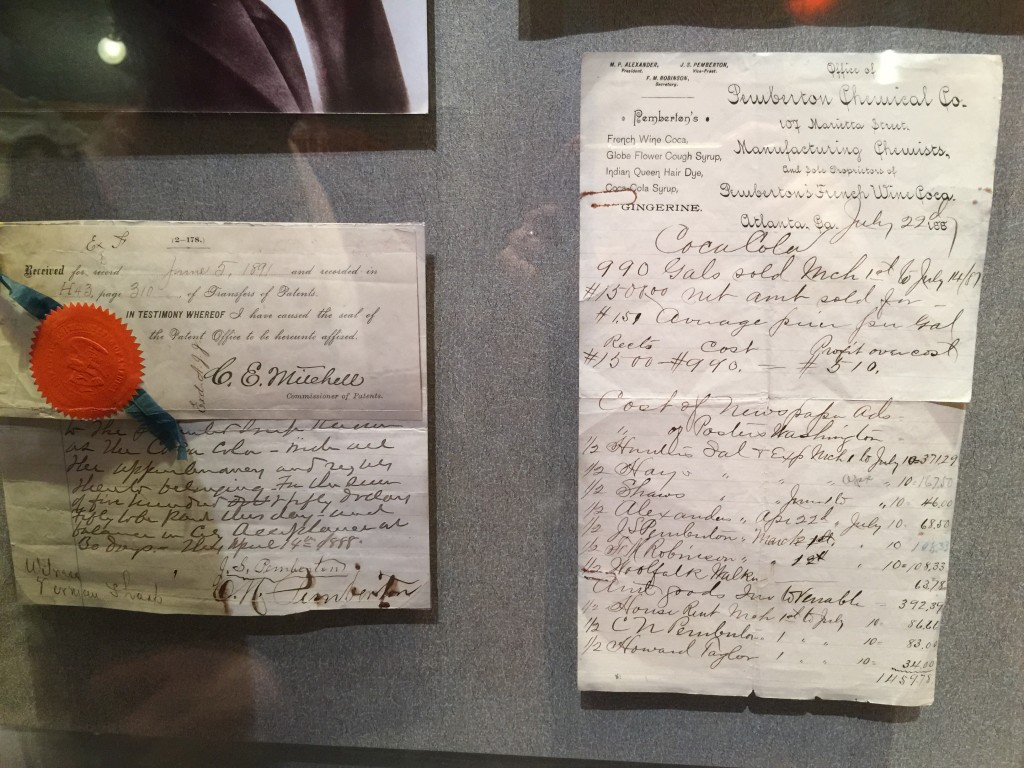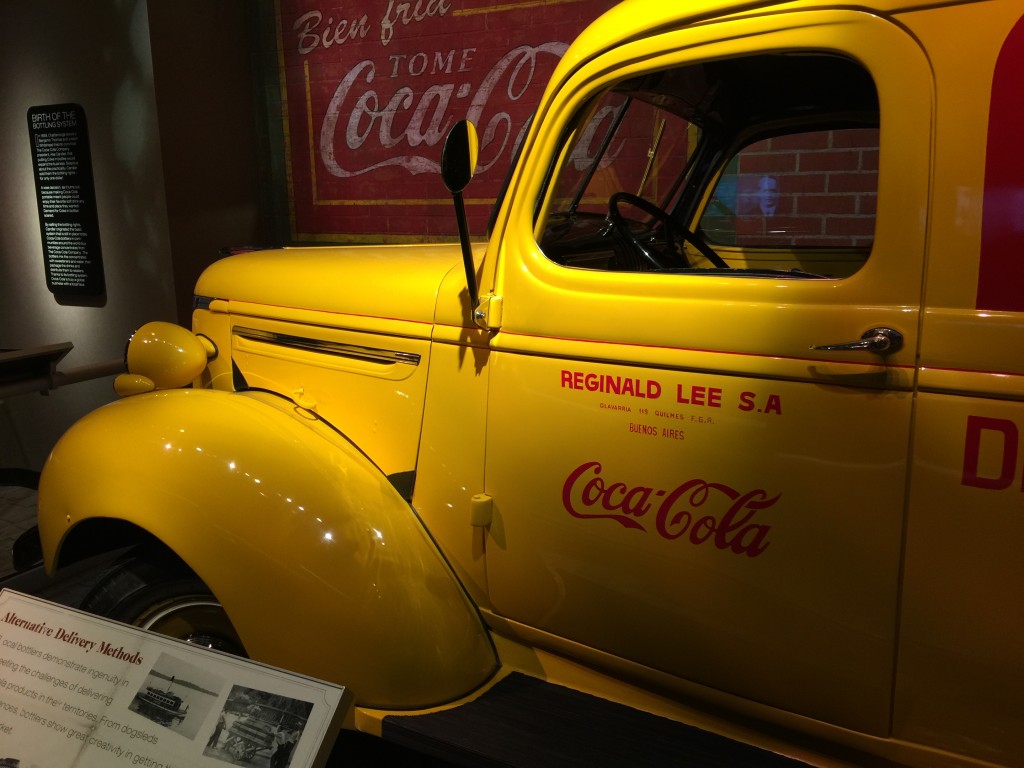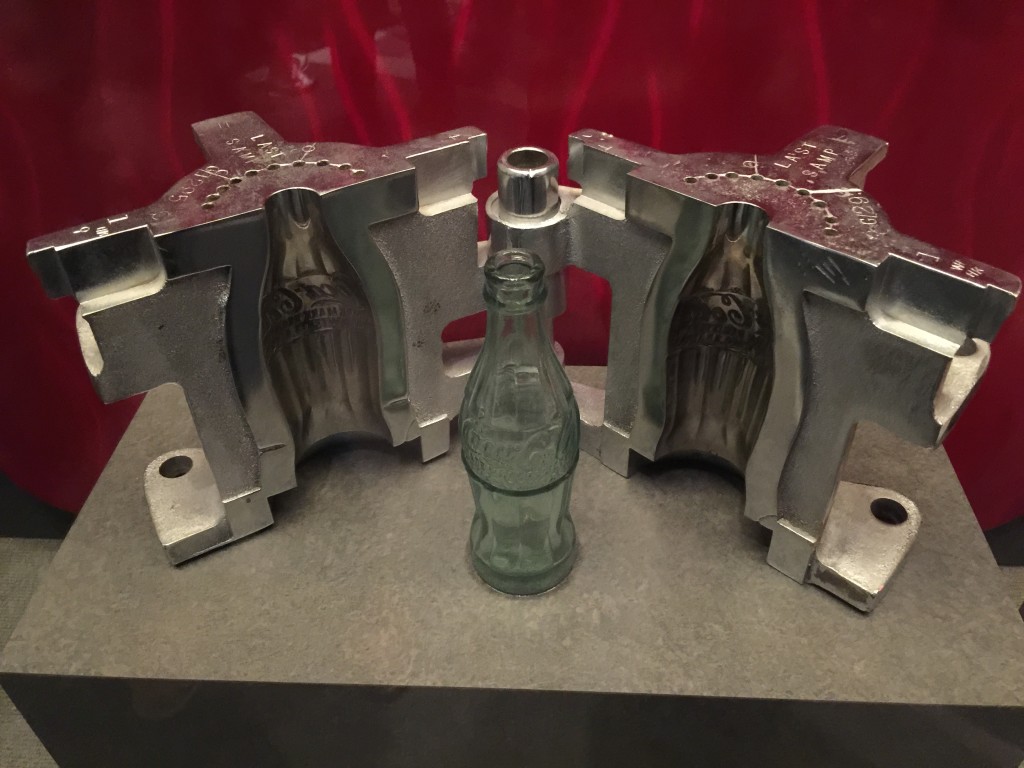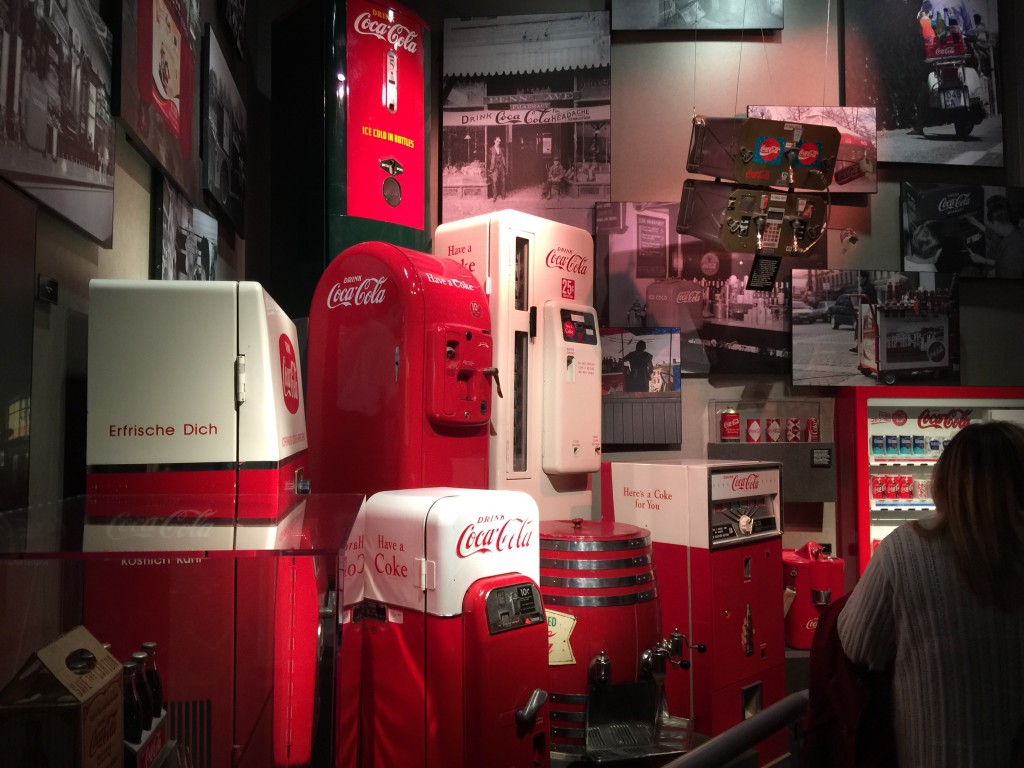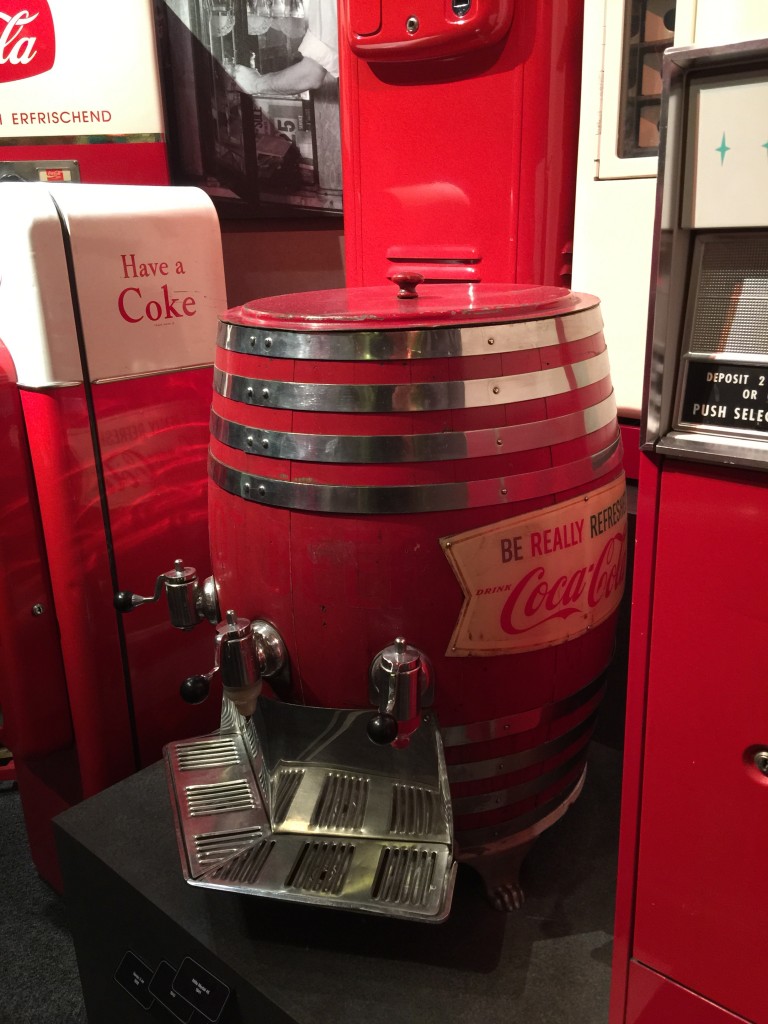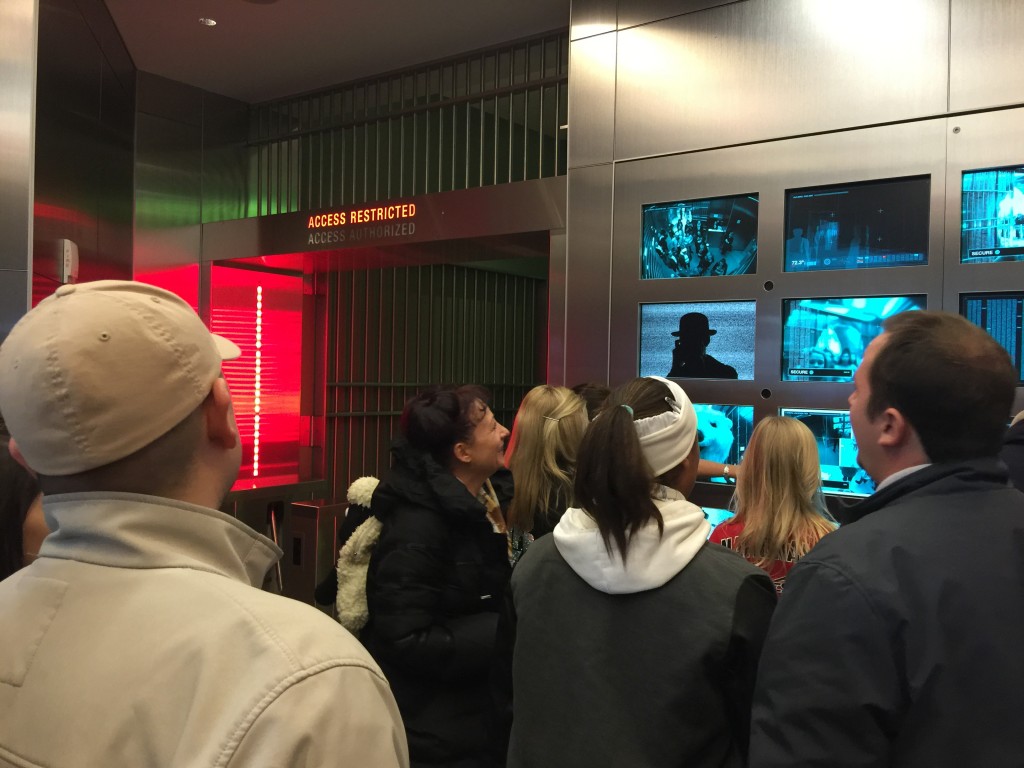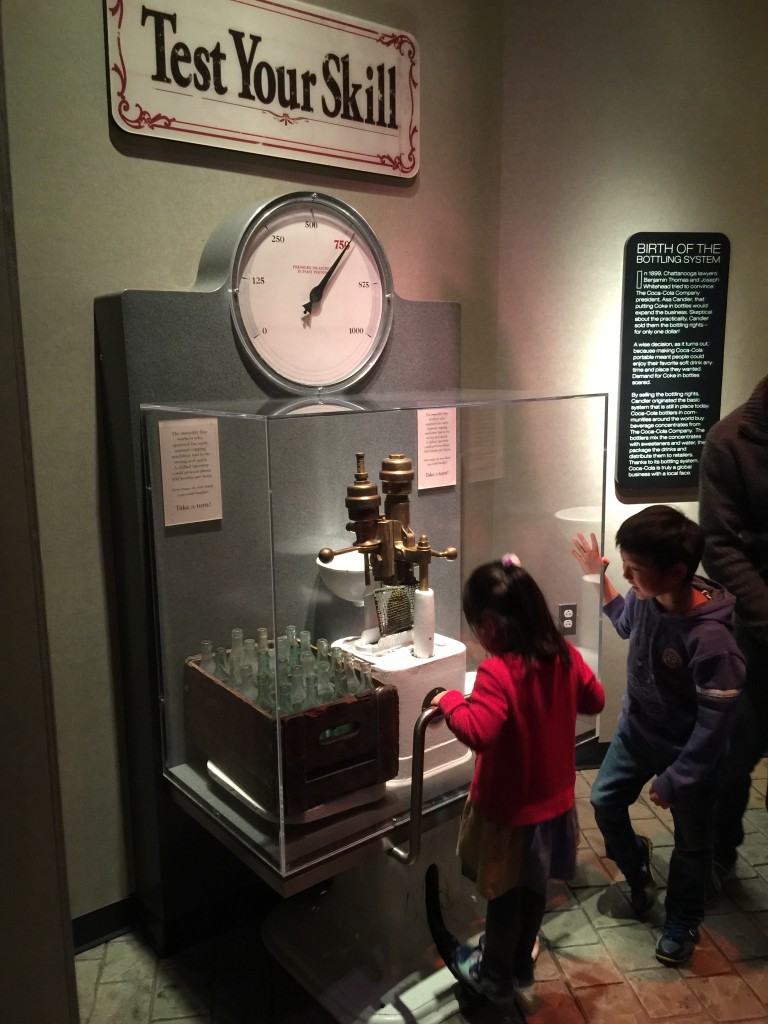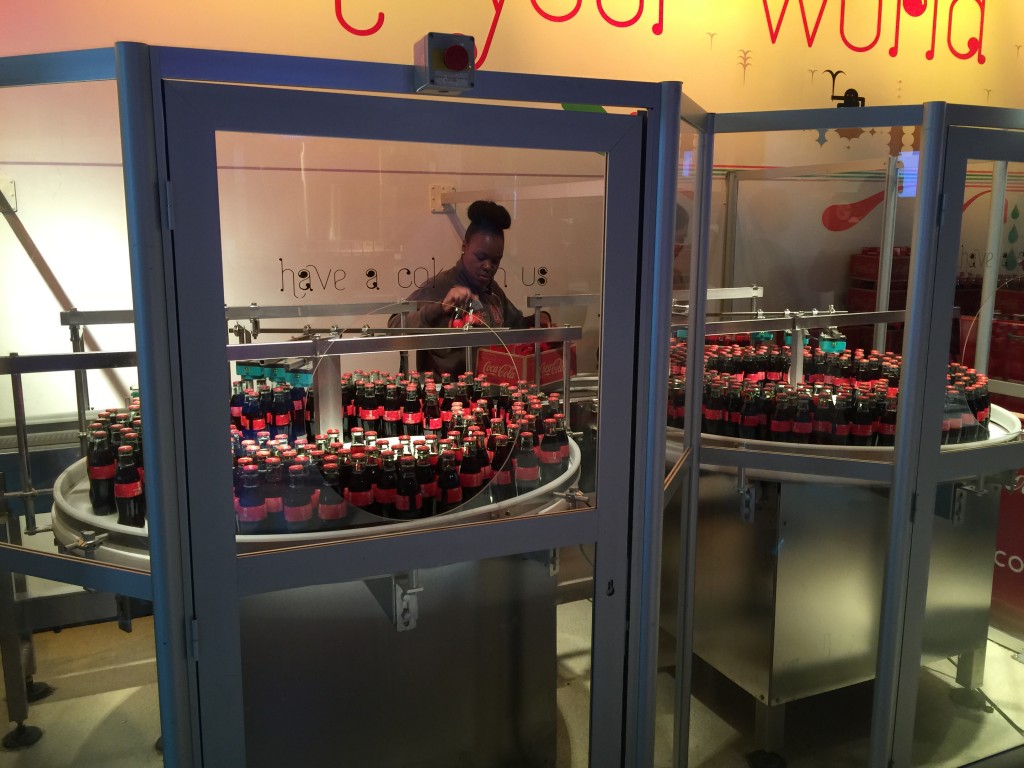We woke up in Atlanta, Georgia this morning and decided to go to one of the most sacred spots in the entire Western Hemisphere: The World of Coca-Cola. What might appear as a mere beverage to some is practically a cult in the South. Coke reigns over this city like royalty thanks to the fact its shares are stuffed in trust funds that have been handed down for generations among wealthy families; are sitting on the balance sheets of non-profits, hospitals, and universities; are pumping out cash dividends for insurance companies and index fund investors. It is arguably the best long-term performing asset in the history of human civilization.
[mainbodyad]Our detour should not be a surprise to any of you. It is no secret that I’m nuts about The Coca-Cola Company. We woke up to its virtues as a business several years ago and now even decorate our home at Christmas in a Coca-Cola theme. Back in 2012, we looked at the 50-year historical investing results. For families that pass shares down through inheritance, a single share bought in 1919 at the IPO for $40 (a share which subsequently crashed to $19 shortly thereafter, by the way), is now worth more than $10,000,000 with dividends reinvested. We’ve talked about how it made Quincy, Florida the richest per capita city at one point thanks to the huge Coca-Cola fortunes built up after the local banker, Pat Munroe, convinced everyone of the merits of the company, going so far to underwrite conservative loans to facilitate the acquisition of shares for qualified borrowers. We’ve done a case study on how Thomas and Whitehead bought the bottling rights for $1 and, through synthetic equity, became incredibly wealthy. We’ve watched a video showing the behind-the-scenes look at the new, top-of-the-line automated factories. You know how we used the company’s DRIP plan to gift shares to my youngest sister since childhood so that she had a nice bonus of stock upon reaching the age of 21 when the UTMA is scheduled to end. (In fact, as of the last time I checked, she had just shy of $12,000 sitting there from the pocket change everyone contributed over the years. If she holds onto those shares, saves $50 a month for the rest of her life expectancy, and Coke performs perfectly average over that time period, she will be sitting on around $5,475,000 worth of the stock by the time she dies. If inflation runs around 3%, it would be equal to purchasing power of $930,000 or so today. Small amounts, in good assets, over long stretches of time, result in crazy outcomes relative to effort. Compounding is a force with which to be reckoned.) I even once laid out a plan for her to supercharge that and get to $250,000 by the time she was 35 years old.
We’ve talked about some of the controversies surrounding Coca-Cola. You know I load up on the cane sugar Mexican variety of Coca-Cola whenever I get a chance at my local Costco. You’ve shared my horror when my niece, whom I love with all of my heart, announced her betrayal, siding with her late grandfather when she proclaimed that Pepsi is better than Coke. We’ve examined the nine lessons you can learn from one of Coke’s famous CEO’s, Roberto Goizueta. We’ve talked about Berkshire Hathaway, which many of us own, having a huge stake in the business.
In other words, you know the drill. So imagine our excitement when we stepped foot upon this hallowed ground … (note, all of the pictures should enlarge if you click them) …
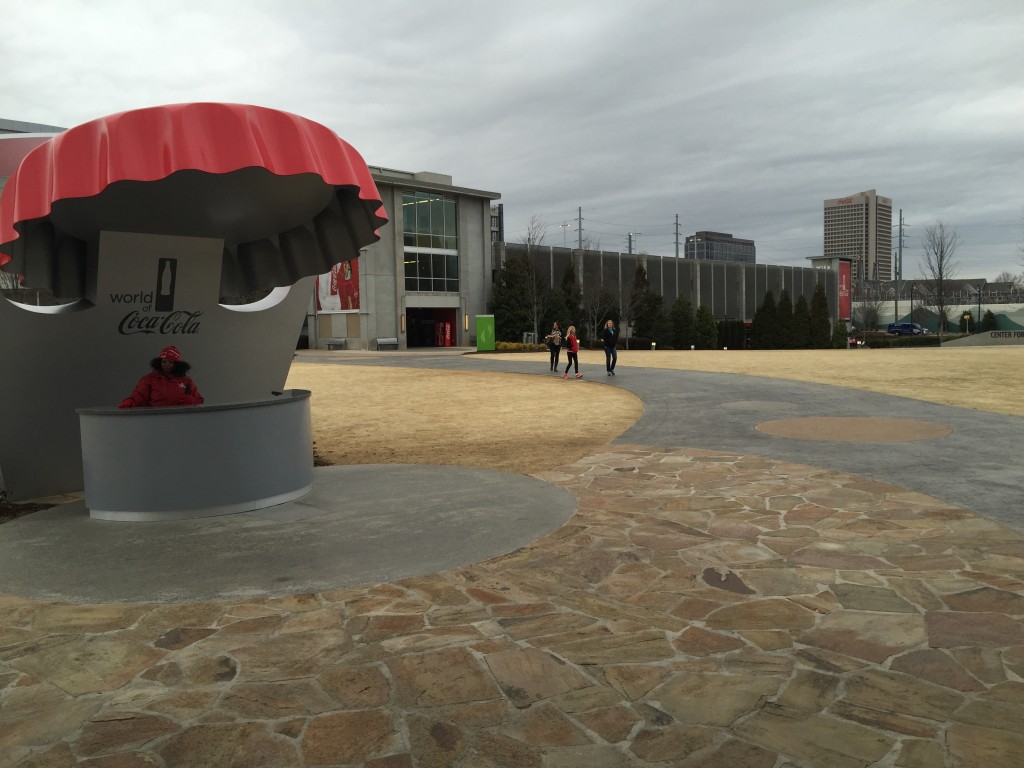
Some people want to go to the Vatican. Some people want to see Mecca. These capitalists, however, want to visit a truly holy site: The World of Coca-Cola in Atlanta, Georgia. It’s a huge exhibit with historical archives from the company’s past. Over in the distance, you can see corporate headquarters. It makes me want to buy obscene amounts of the stock and put it in trust for our children and grandchildren. This is the place where all that money goes to be counted before getting shipped out to the shareholders as a cash dividend.
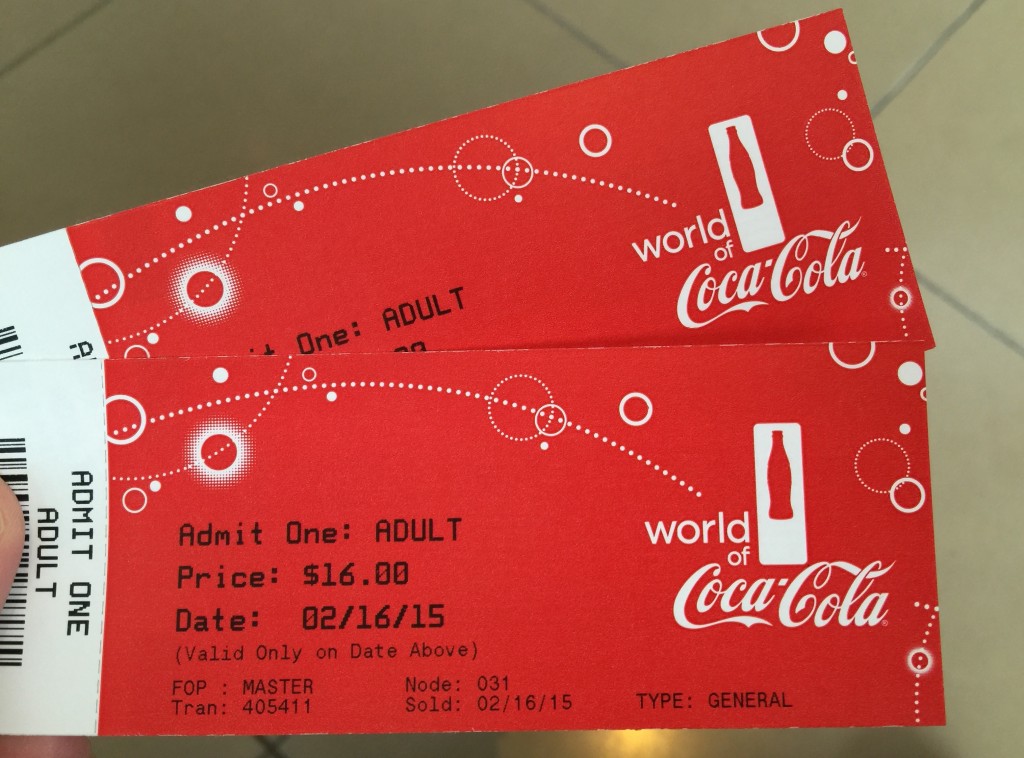
We parked across the street, ran over to the ticket kiosk, and bought two general admission tickets to The World of Coca-Cola.
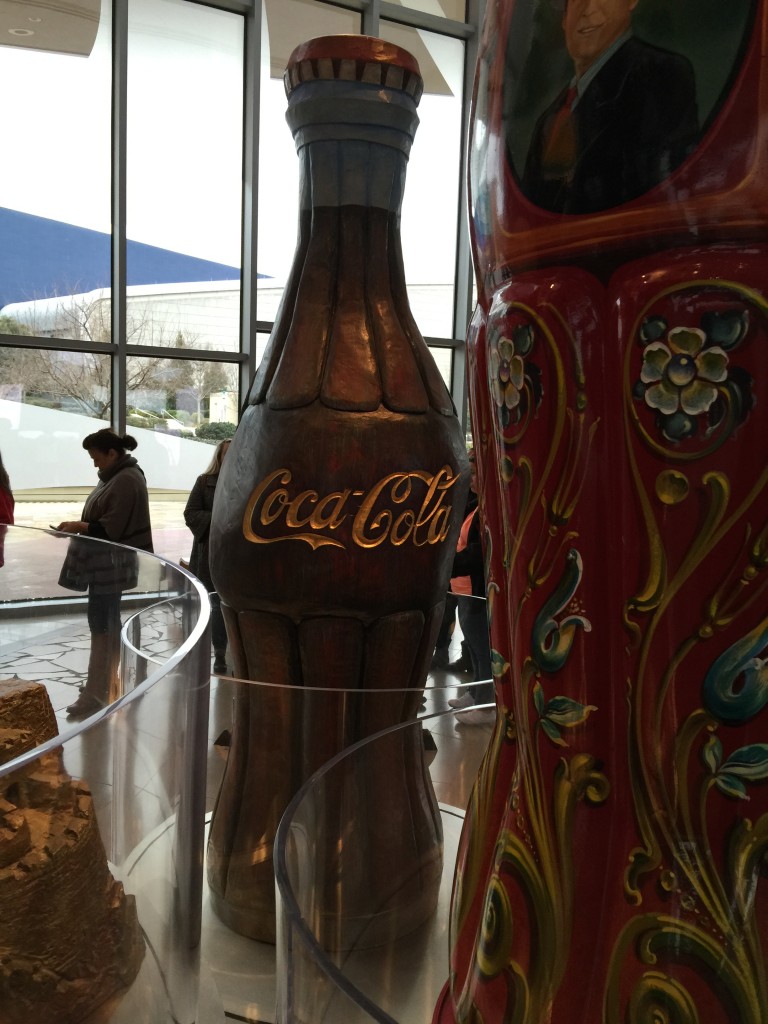
We waited in this atrium until the tour began. I liked the gold leaf Coca-Cola carved into the wooden bottle.
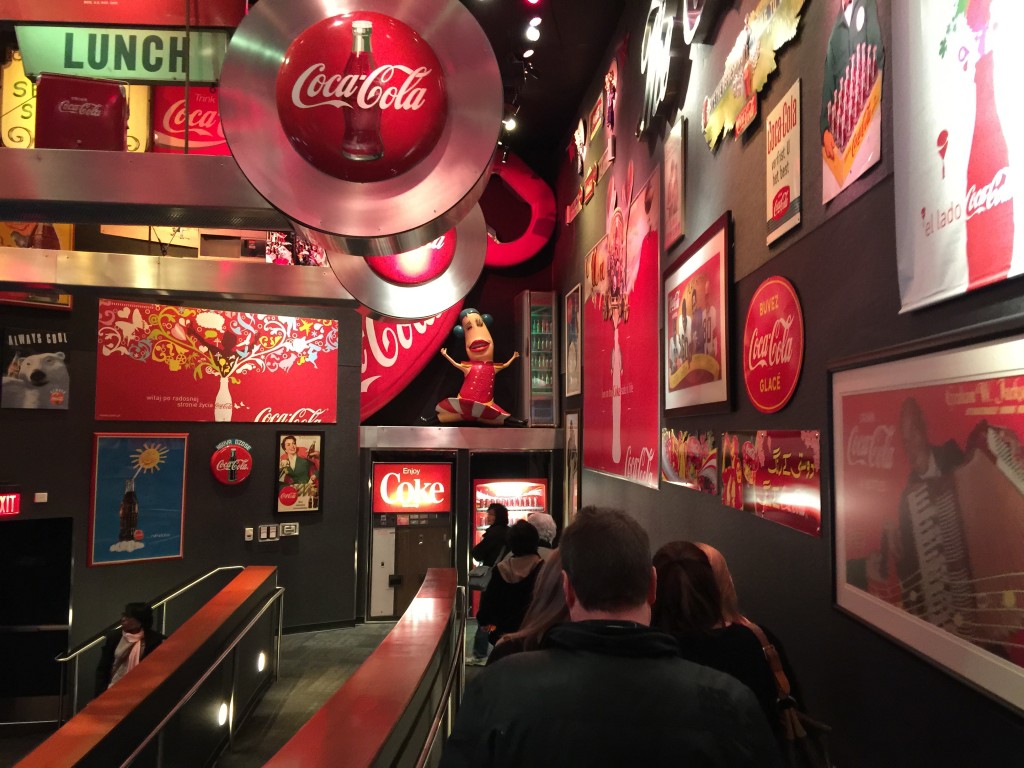
Once the tour started, you were taken into this Coca-Cola memorabilia room. You later learned that all of the things in there were taken from around the world. The giant Coca-Cola lettering on the wall at the top right, for example, was the original corporate logo that emblazoned the building for nearly three-quarters of a century until they built their current corporate headquarters in downtown Atlanta. There were Coke ads from Pakistan and China; South Korea and Germany; Columbia and Canada.
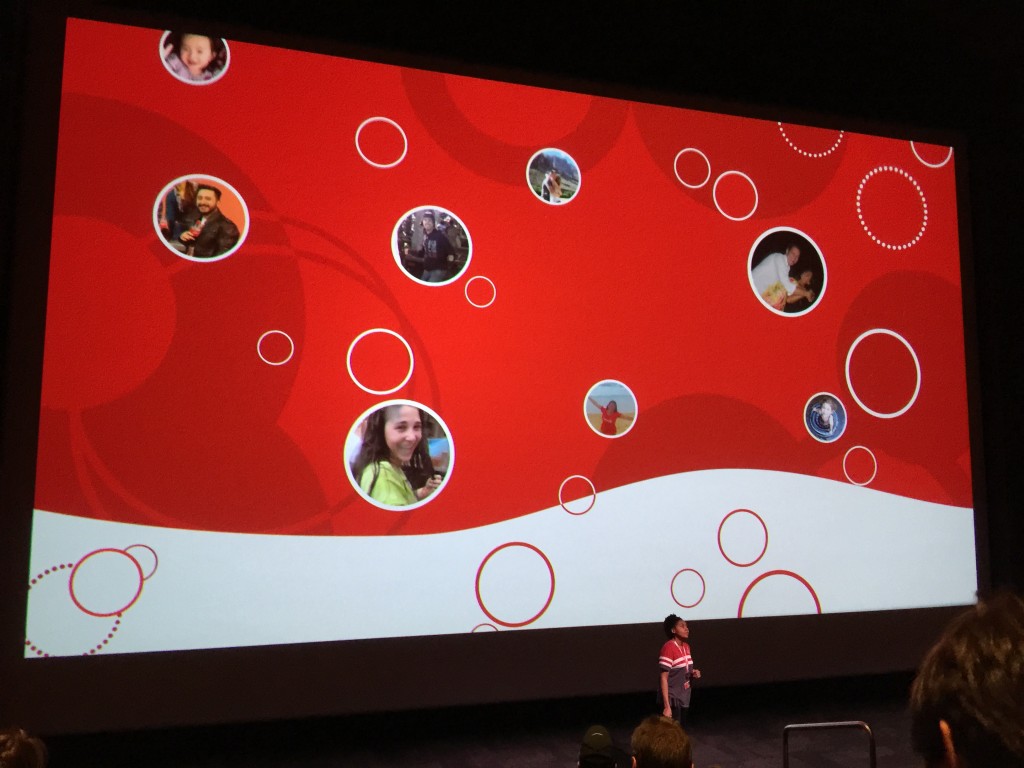
Once that part of the tour was completed, we were taken into a private movie theater to watch a film about moments of happiness. Aaron was laughing about it because he said, “I expected a corporate video on the history of Coca-Cola. That was six minutes of propaganda.” It was fantastic.
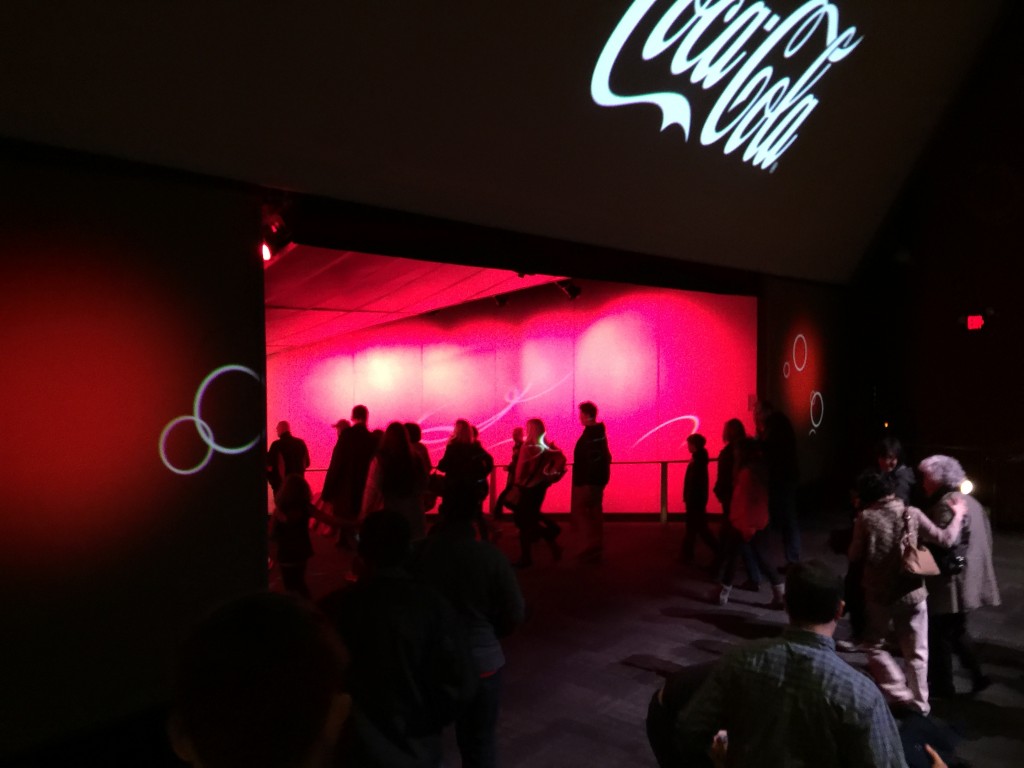
When the film was done, the screen rose and the Coca-Cola logo appeared as you were taken into a colorful tunnel. It was very Willy Wonka-ish.
Everyone else made a direct run for The Coca-Cola Vault containing the secret formula. Instead, we went to the history wing first to see some of the archived documents.
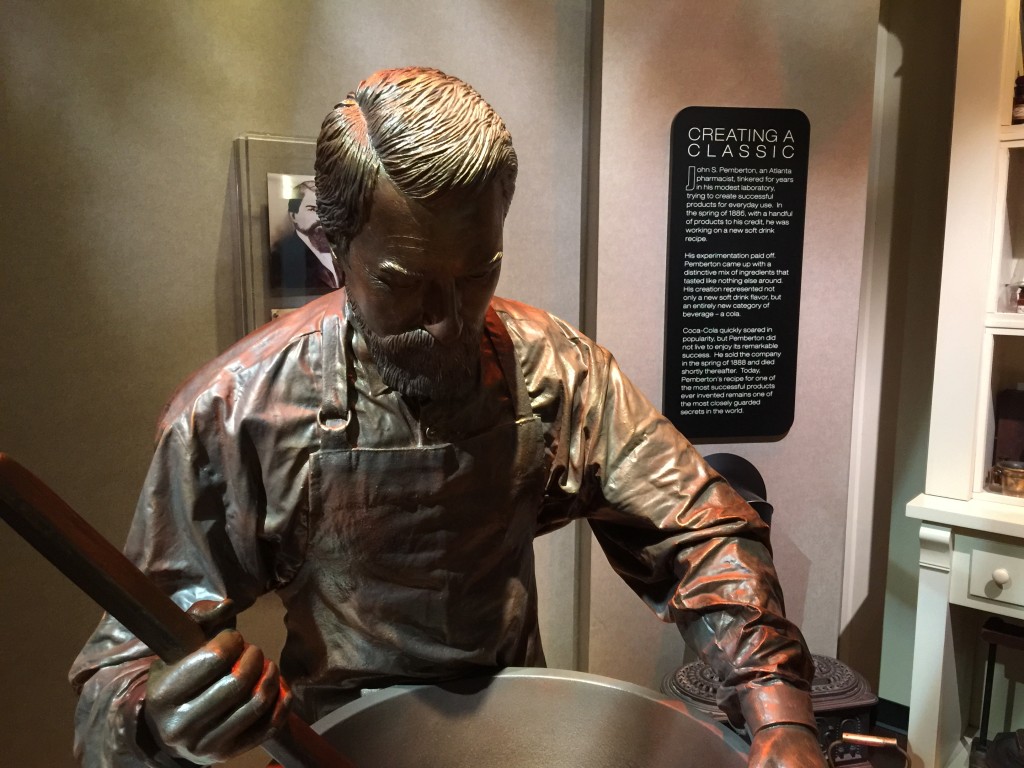
Pemberton, a pharmacist, invented Coca-Cola. He sold it to drug stores, which would serve it over the counter. He wasn’t a very good businessman, though, and in the first year, he generated $50 in revenue and $75 in costs.
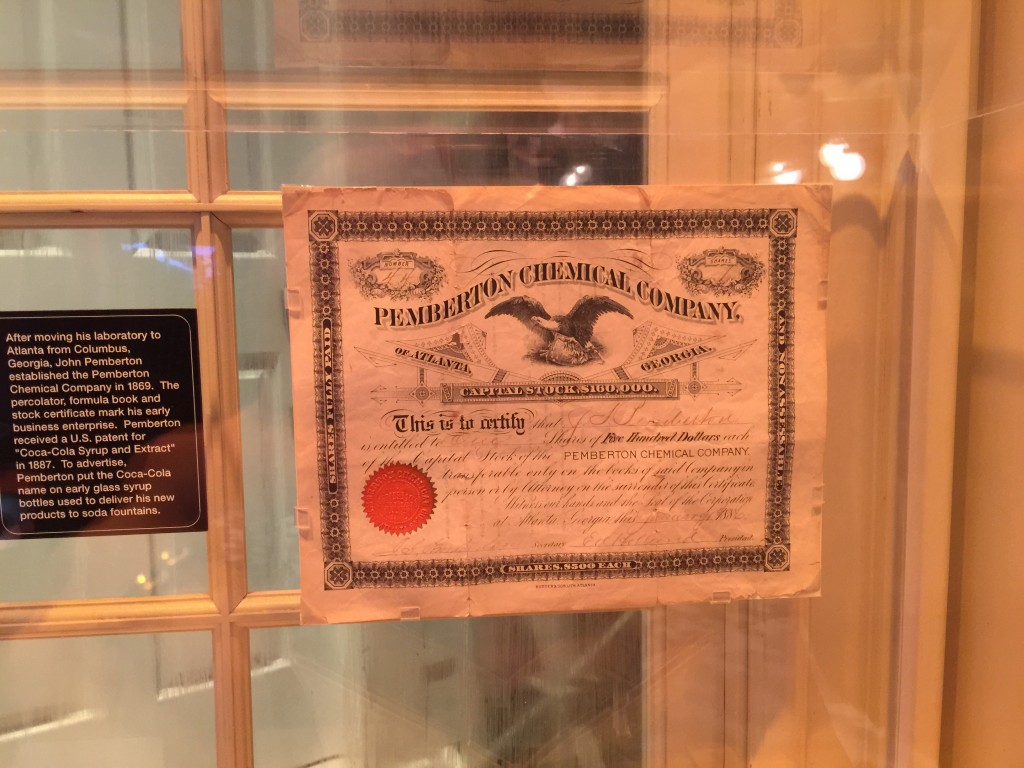
He issued stock in the Pemberton Chemical Company, raising funds by selling off ownership to outside investors. This is one of his original stock certificates.
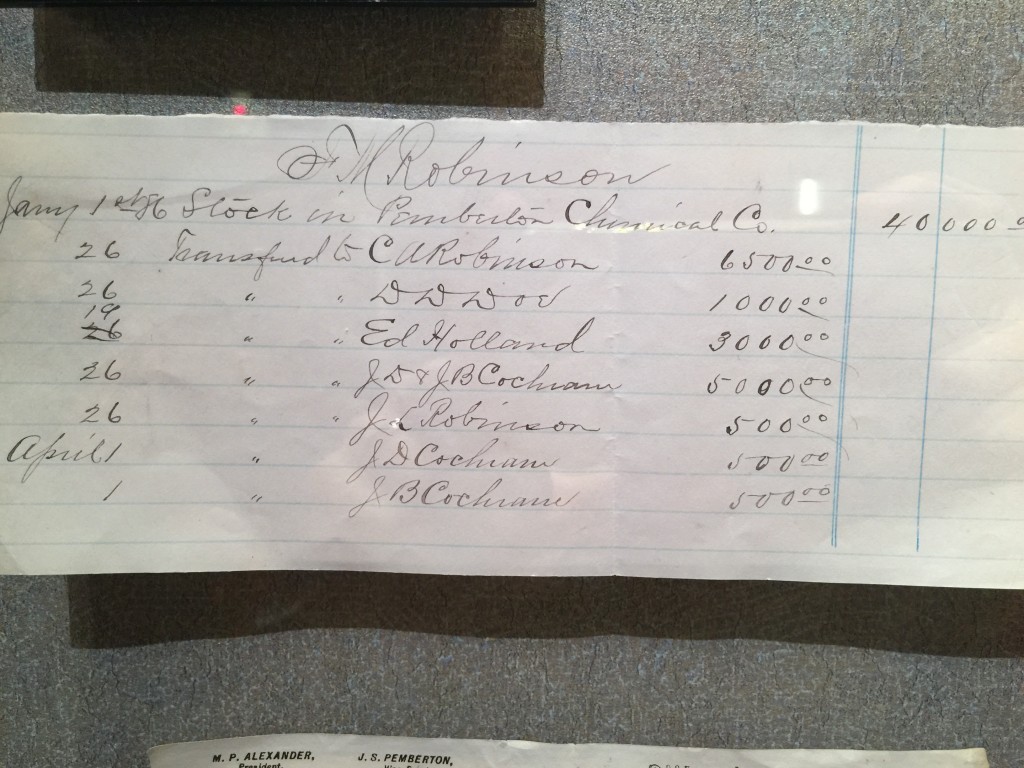
Here is the investor roster of the Pemberton Chemical Company, which owned the rights to Coca-Cola. These people had no idea what they had in their hands.
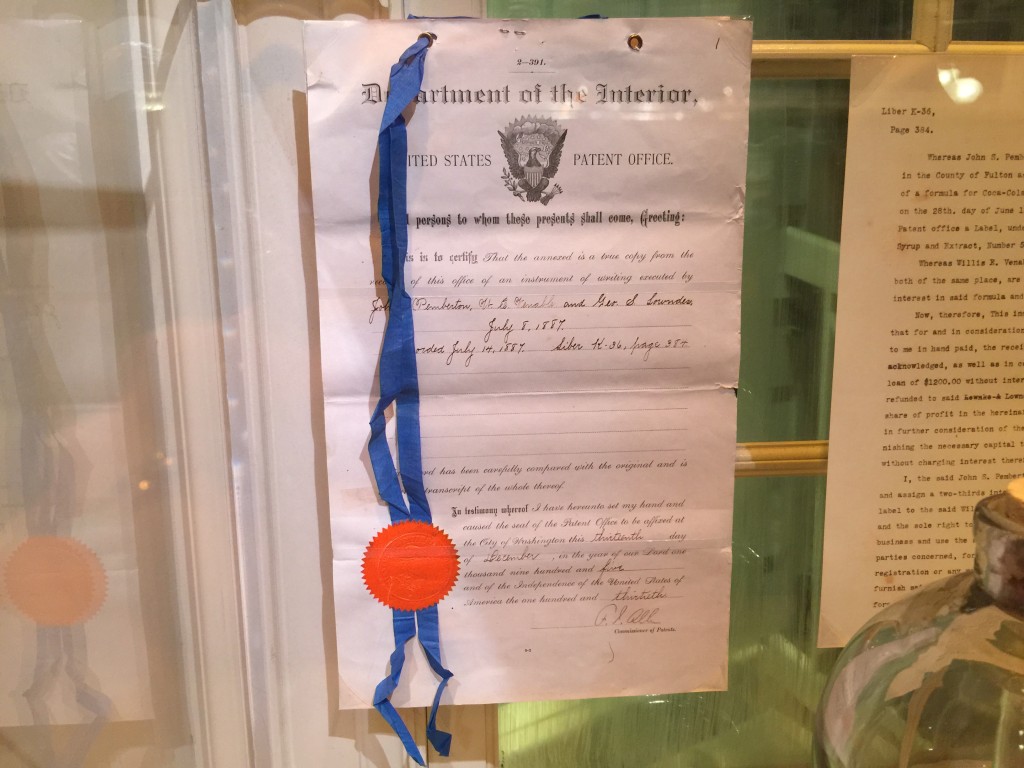
The Pemberton Chemical Company was awarded a patent on Coca-Cola. It was the prime asset of the company.
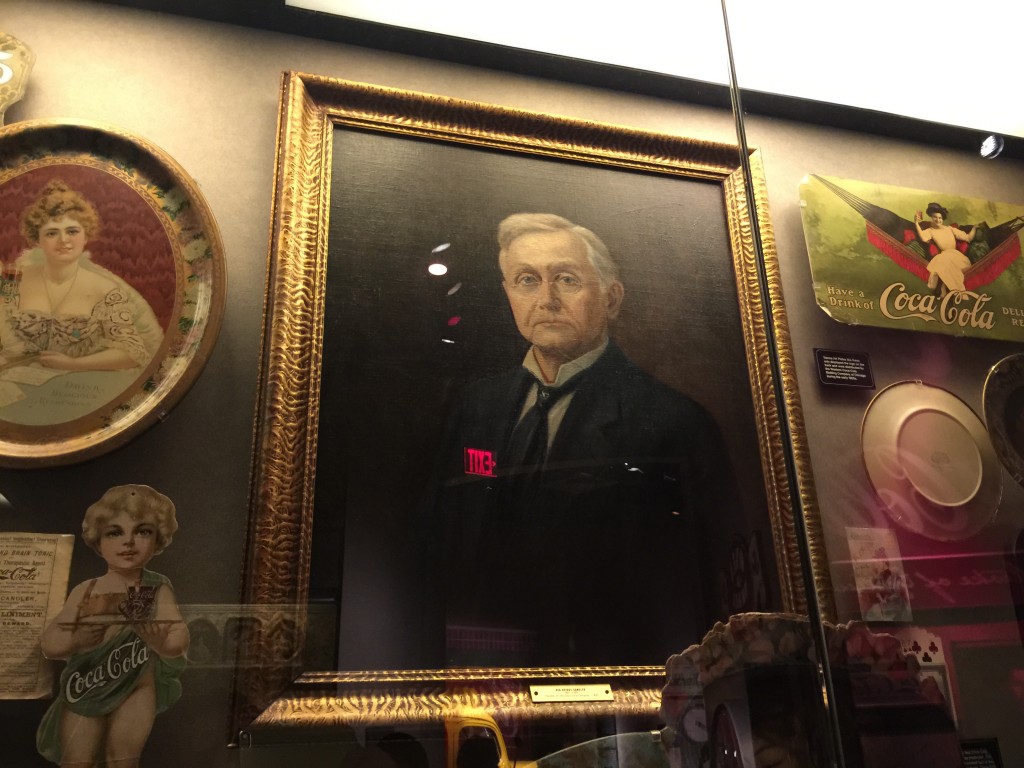
Asa Candler, who came to Atlanta virtually penniless (he was the black sheep “failure” of sorts of a well-connected, wealthy family), tried his first Coca-Cola and tracked down the inventor. The business he controlled, Walker, Candler & Company, bought the 1/3rd share owned by the founder and inventory, John Pemberton, paying $550 for it in April of 1888. According to the company archives, 72 hours later, he bought a 50% interest held by two investors, Wollfork Walker and his sister, Mrs. M.C. Dozier, paying $750. On August 30th, 1888, he effectively completed his acquisition by paying Walker and Dozier $1,000 plus interest for the remainder of their stock, giving him the entire company. The total cost came to $2,300 plus the interest he paid. On December 29th, 1891, the company records show he petitioned “the Fulton County Superior Court to incorporate The Coca-Cola Company as a Georgia corporation”. The first stockholder meeting was held on February 22nd, 1892. Candler handled day-to-day management himself and began branding everything he could find with the Coca-Cola name and logo. Over the next 27 years, he became one of the richest men in the United States as the firm prospered and he showered himself with cash dividends on his common stock. In 1919, having retired from daily management and entered a career in politics, he sold out to a group of investors for $25,000,000. Warren Buffett has called that series of events, “probably the greatest investment ever made in all of human history”. It dwarfs every other investment success story you’ve ever heard. Perhaps just as impressive: A single share of Coca-Cola bought for $40 in 1919 at the company’s IPO when the investors went public is now worth north of $10,000,000 with dividends reinvested.
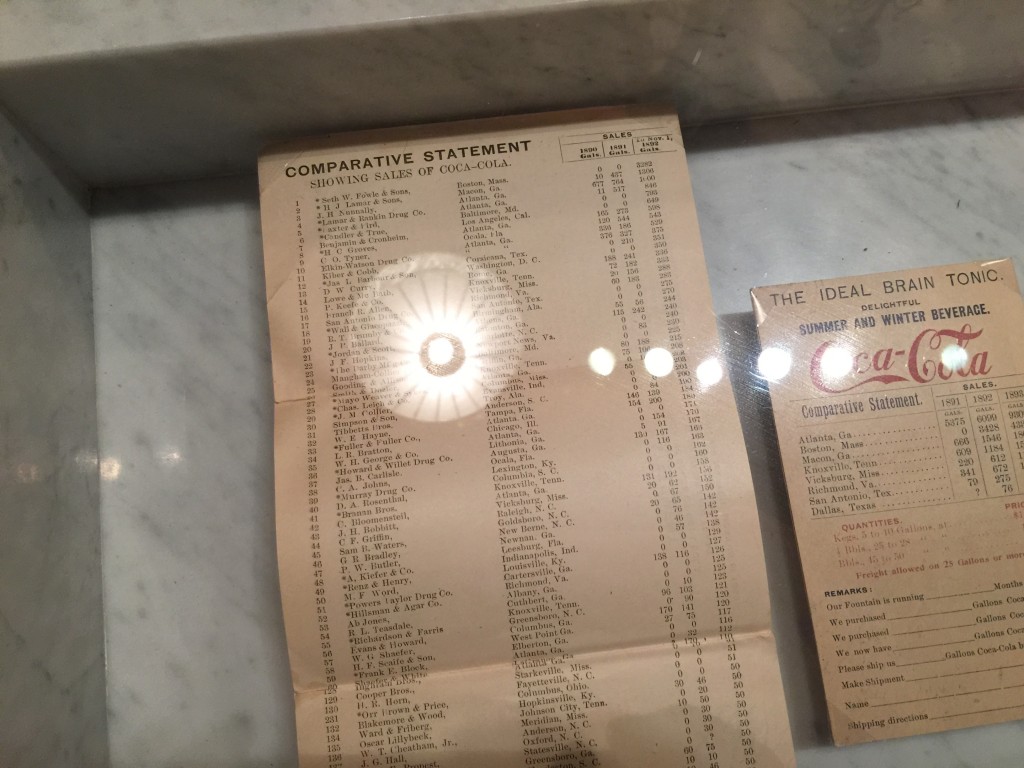
You can tell Candler was serious. The sales reports weren’t hand-written, he wanted precision. It was a very different game from what Pemberton was playing.
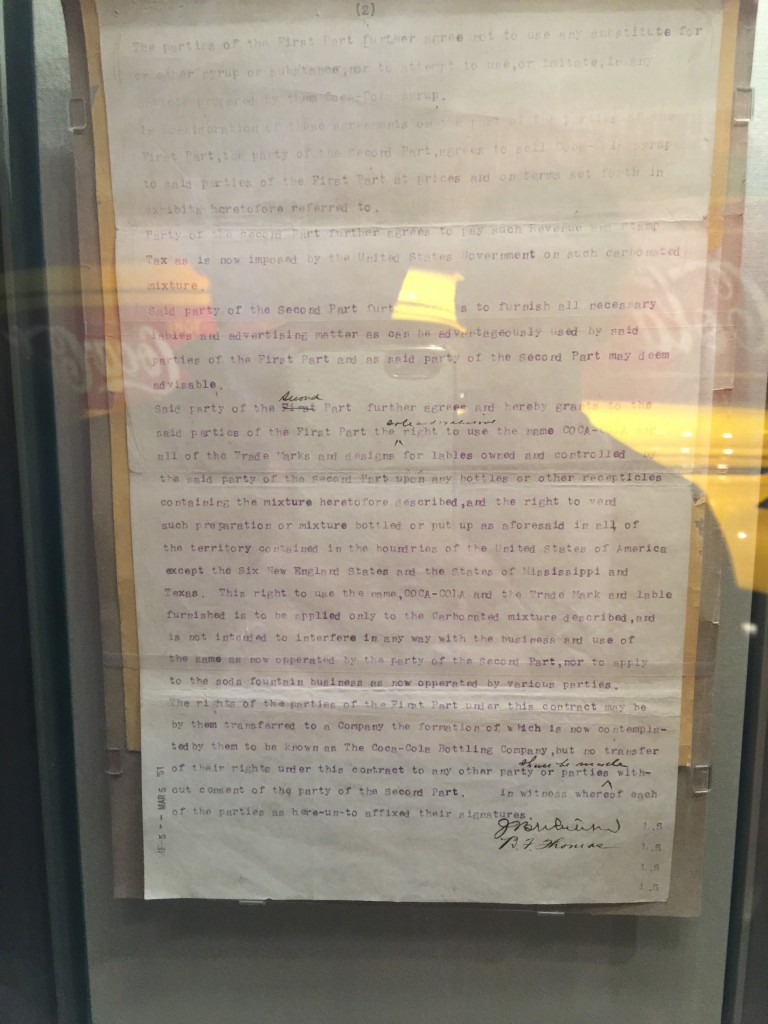
Remember that post I wrote years ago about how Thomas and Whitehead used synthetic equity to build one of the biggest fortunes in America? Here is the contract. You’re looking at it. It was one of the single biggest mistakes Asa Candler ever made. It haunted The Coca-Cola Company for more than 100 years. It gave away the franchise rights to almost the entire country for $1. Worse, it set the price of the syrup without inflation adjustments. There are families in this country who are still able to buy the syrup for next-to-nothing and sell it at retail, turning it into a license to print money at stockholders’ expense. Yet, Coke was such a fundamentally superior enterprise, it still became one of the most profitable businesses in the world.
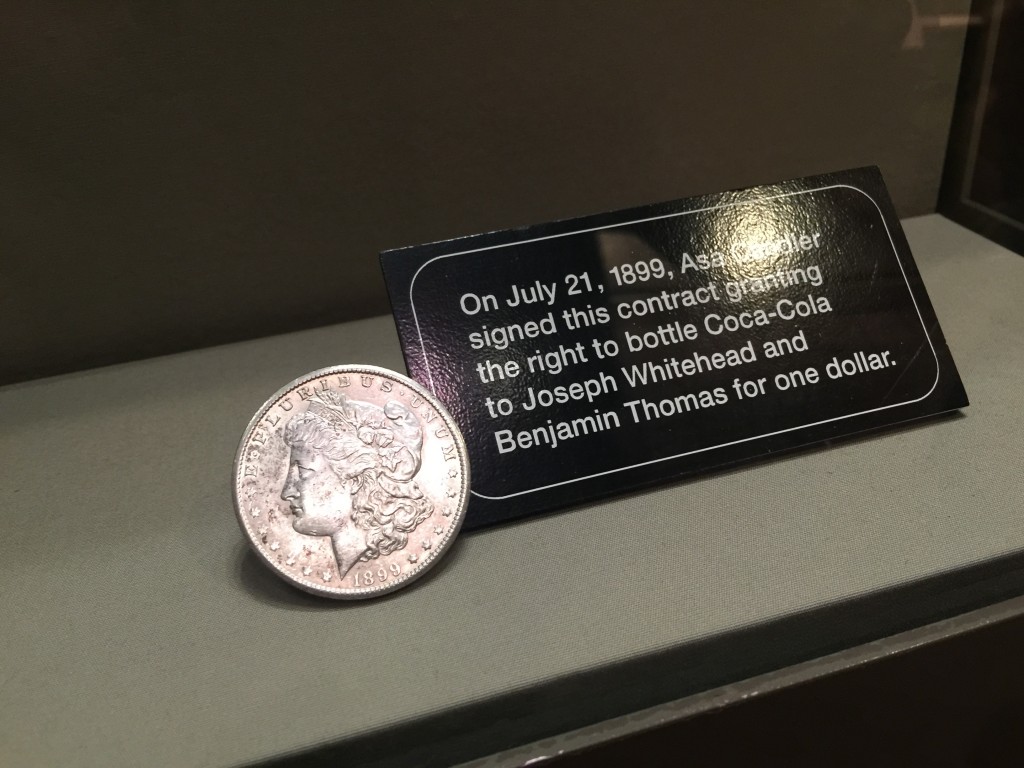
Incredible. It’s just incredible. There are so many lessons in this contract a person can apply to his or her career.
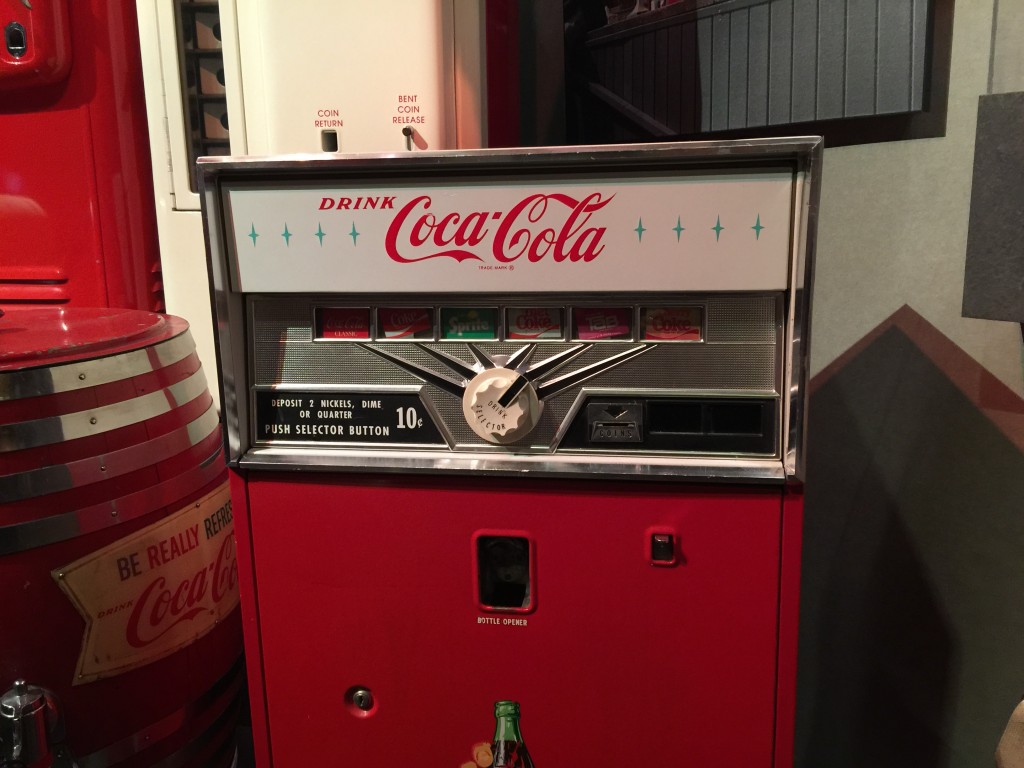
Aaron was saying how weird it was that we were alive when some of these were in service. I remember, in the 1980’s, machines like this that were then a few decades old, still operating in the small town grocery stores. Heck, I remember when cigarette machines looked sort of like this, had no one watching them, and you put coins into them, pulled a lever, and a packet of cigarettes fell out. Even though I never smoked, I had some extended relatives who did and as an elementary school kid, they’d have me go pick up a pack for them.
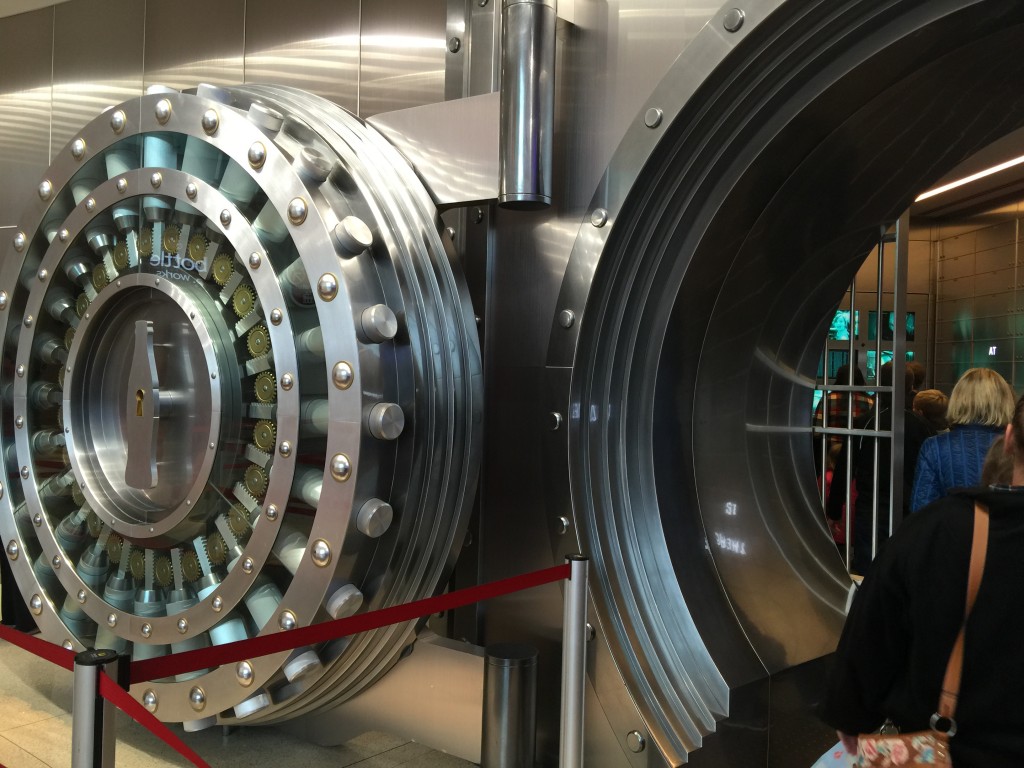
The Coca-Cola vault … For 86 years prior to its move here, it was kept safe in the Sun Trust Bank vault in Atlanta, Georgia. It was also temporarily held in New York City when it was used as collateral on a bank loan, the bankers requiring physical possession in exchange for extending funds.
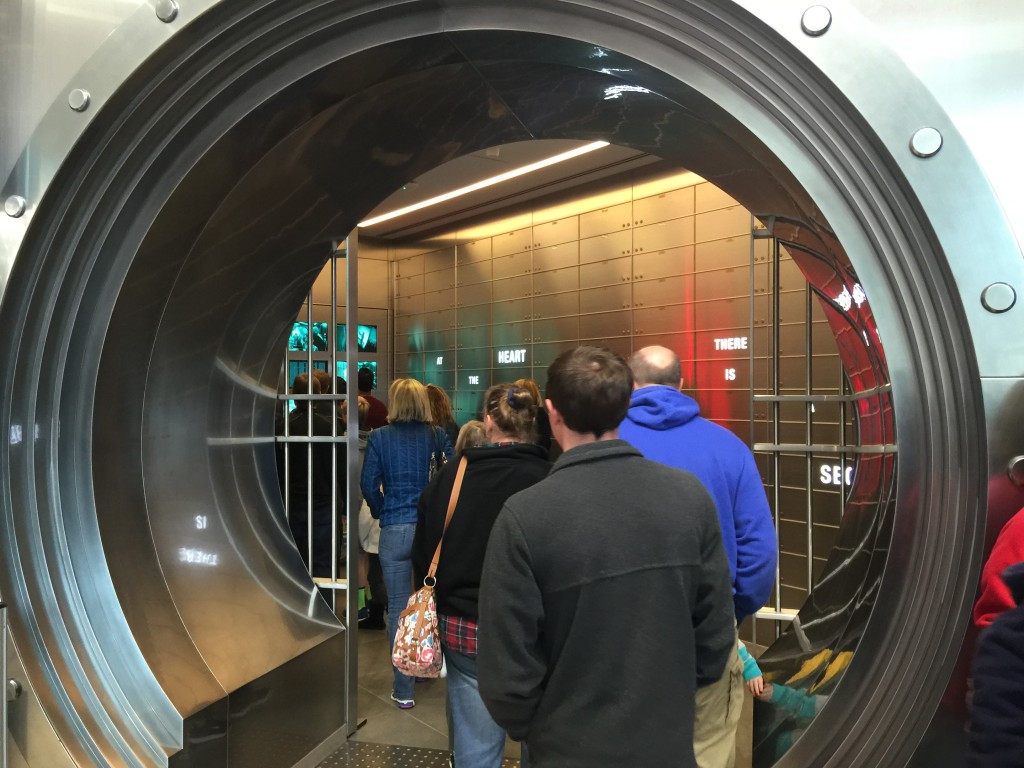
This is cool but somehow, I think I’d rather see the Sun Trust Bank safe where the actual original recipe was kept for nearly a century. I should try to visit that bank if I get a chance on the way back through town …
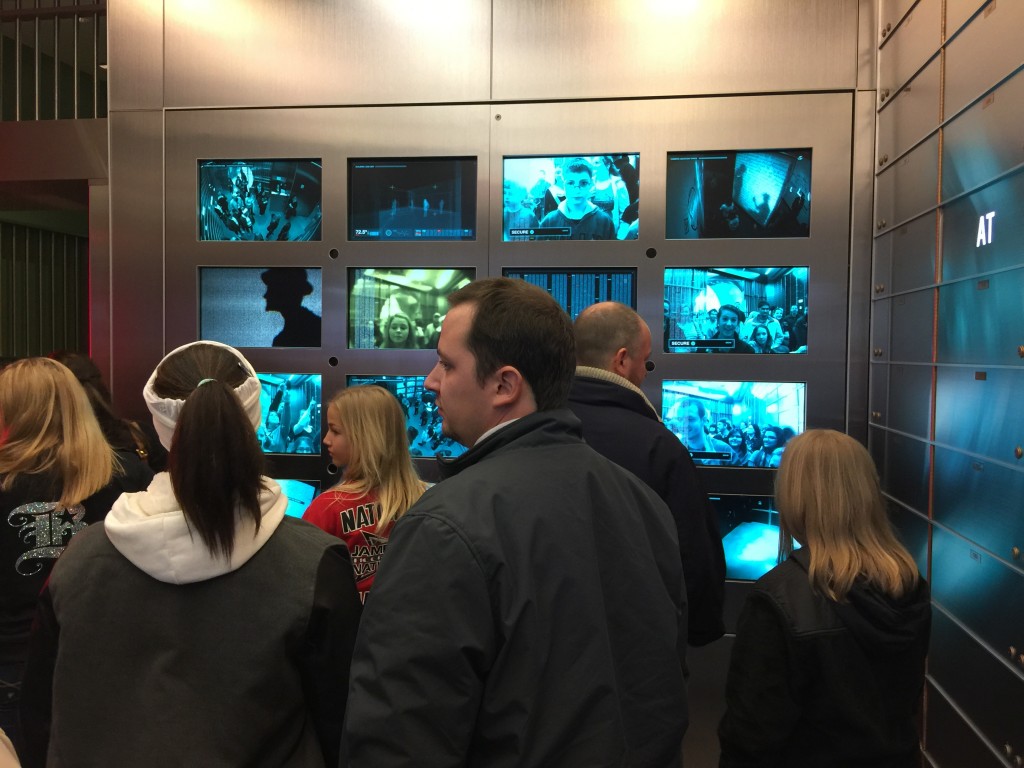
Oooo … their graphic designer did a really good job on the special effects of the faux security system.
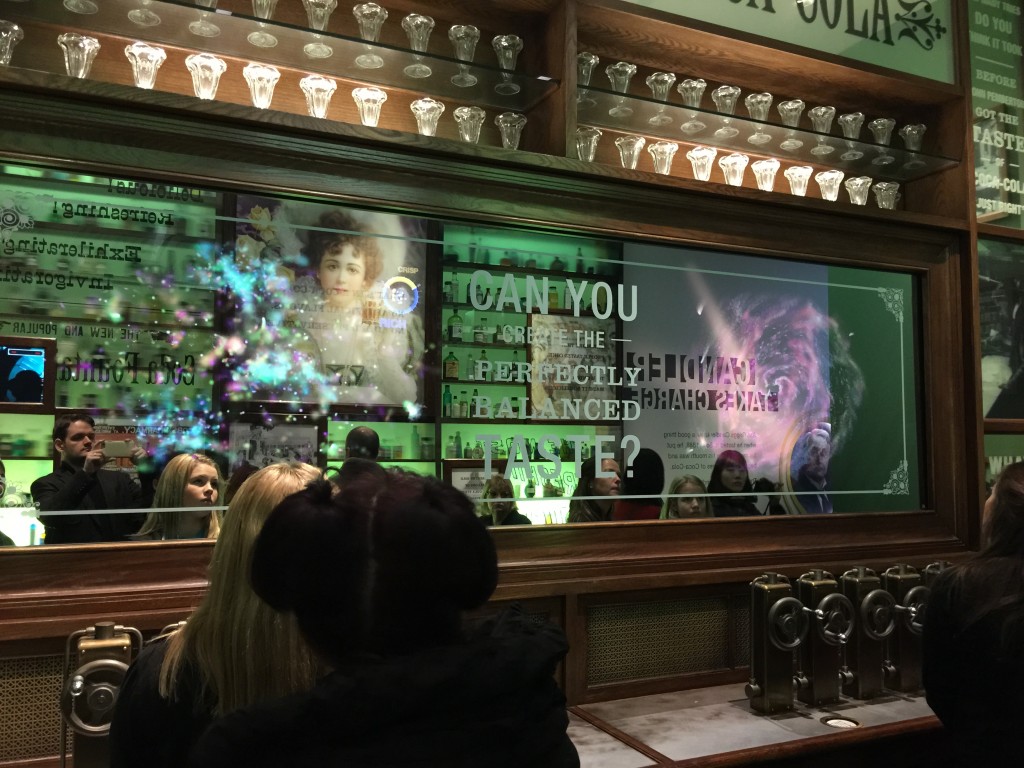
As we make our way through the Coca-Cola vault, there is all sorts of information on Pemberton’s process, the formula, the flavor profile. You can spot my reflection in the magic glass if you look closely. (The special effects were cool. Some of the glass and mirrored surfaces were distorted so that they appeared 3D, or animated, or would change as your shifted your position. It was Walt Disney quality.)
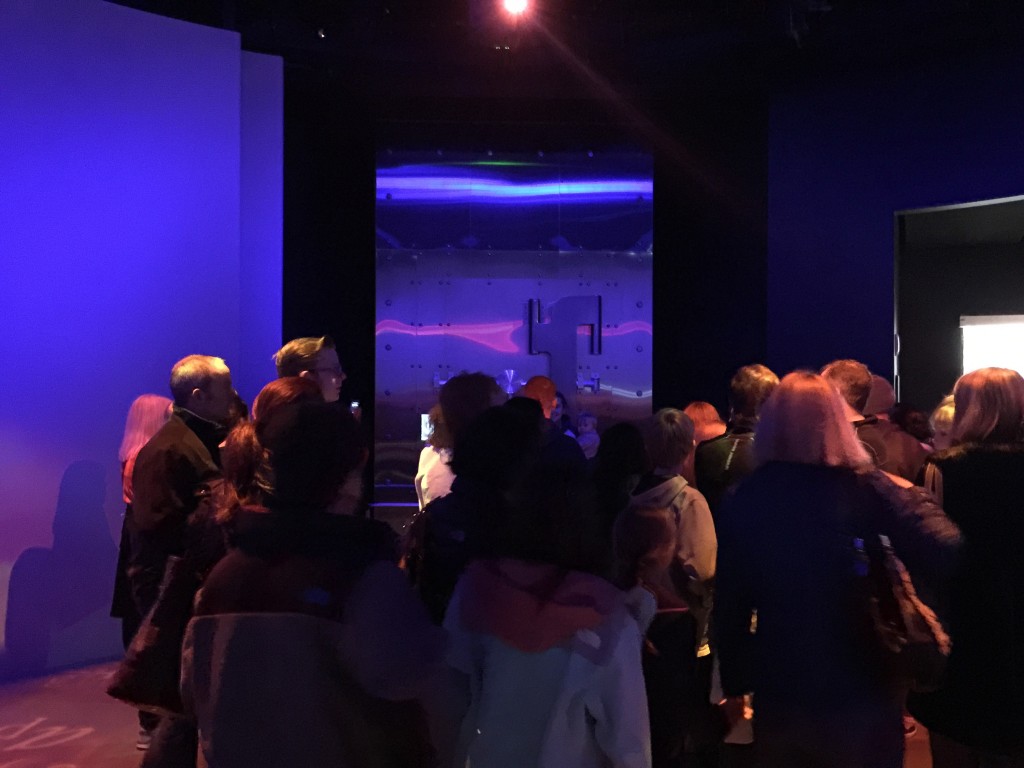
The vault itself, which supposedly contains the original secret Coca-Cola recipe. It’s great for mystique but, technically, science is advanced enough today reverse engineering it isn’t a problem. It has vanilla, lime, orange oil, lemon oil, coriander oil, cinnamon oil, nutmeg oil, and a few other ingredients. It’s the patent and trademark that do the protecting these days, not secrecy. Though the concentrate manufacturing locations – where the real stuff that is sent to the bottlers to mix with carbonated water and sugar – are largely unknown.
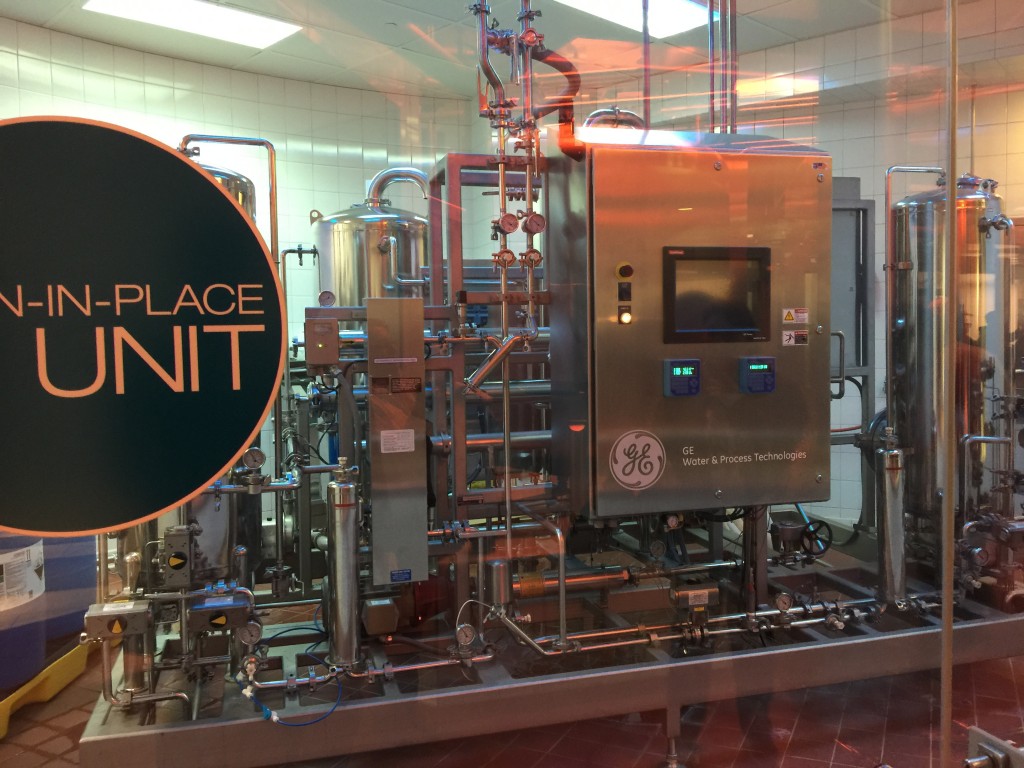
That was a beautiful sight to behold … We were touring the bottling plant section and it began with a General Electric water treatment setup.
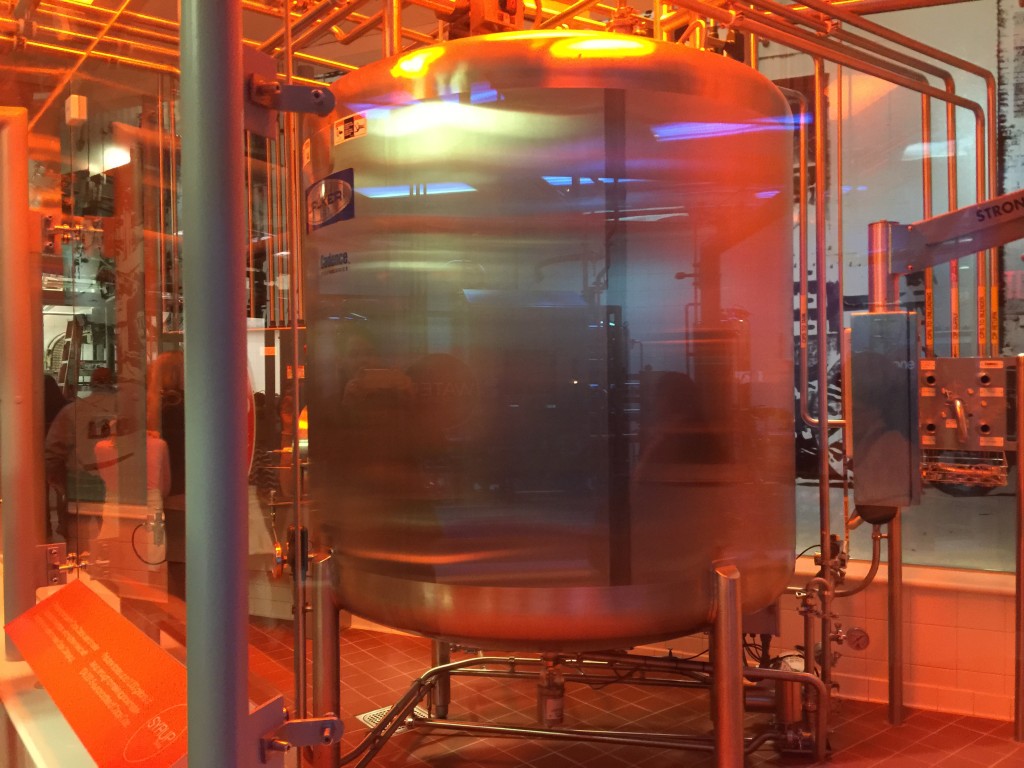
This is what the Coca-Cola Company actually does. It manufactures the syrup concentrate it sells to its franchisees, the bottlers. Though, these days, they own most of the bottlers in North America thanks to a mega-deal that went through in recent years when they bought out their former partners.
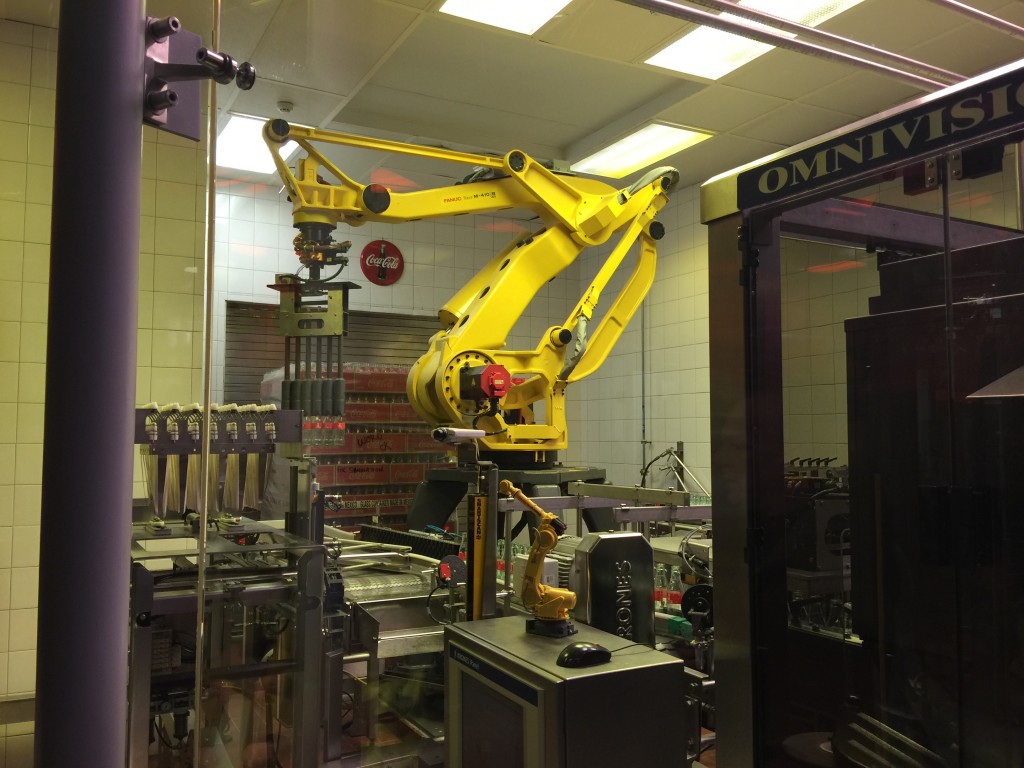
The automation was incredible. Everything was slowed down for us. This mini-plant made 20 bottles per minutes so we could see the process with the human eye. Some plants run at a rate of 2,200+ bottles a minute.
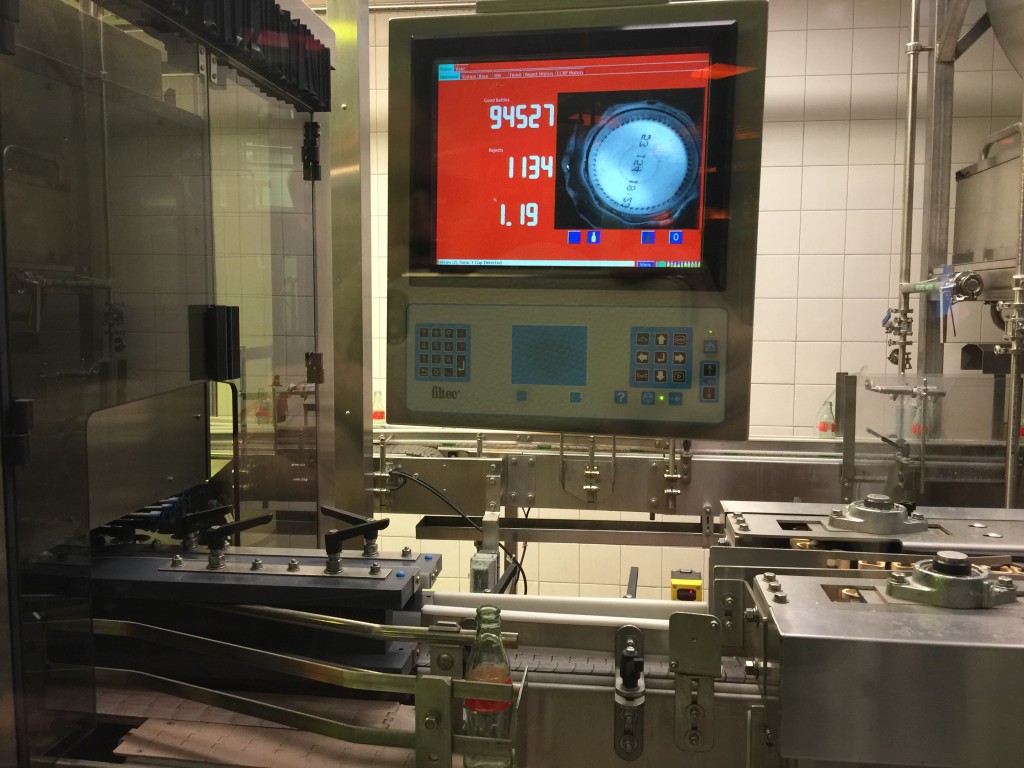
A machine automatically checks the integrity and shape of each bottle, rejecting those that aren’t up to par.
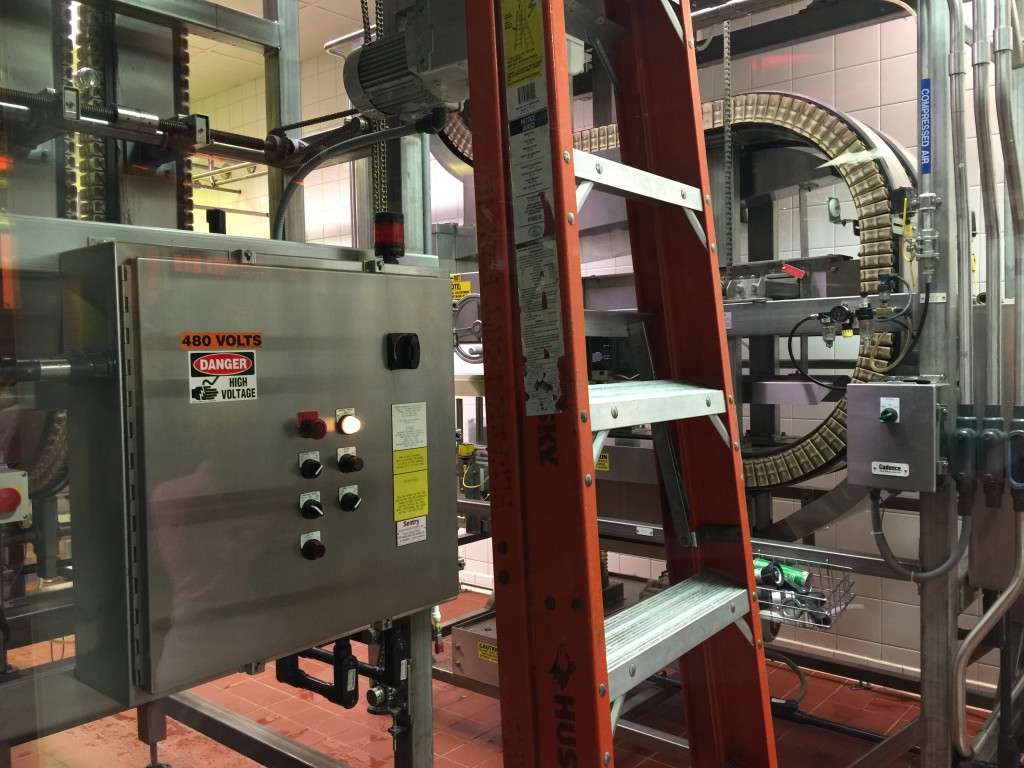
I like machines. I like machines a lot. Until, at least, they become sentient and try to take over the world.
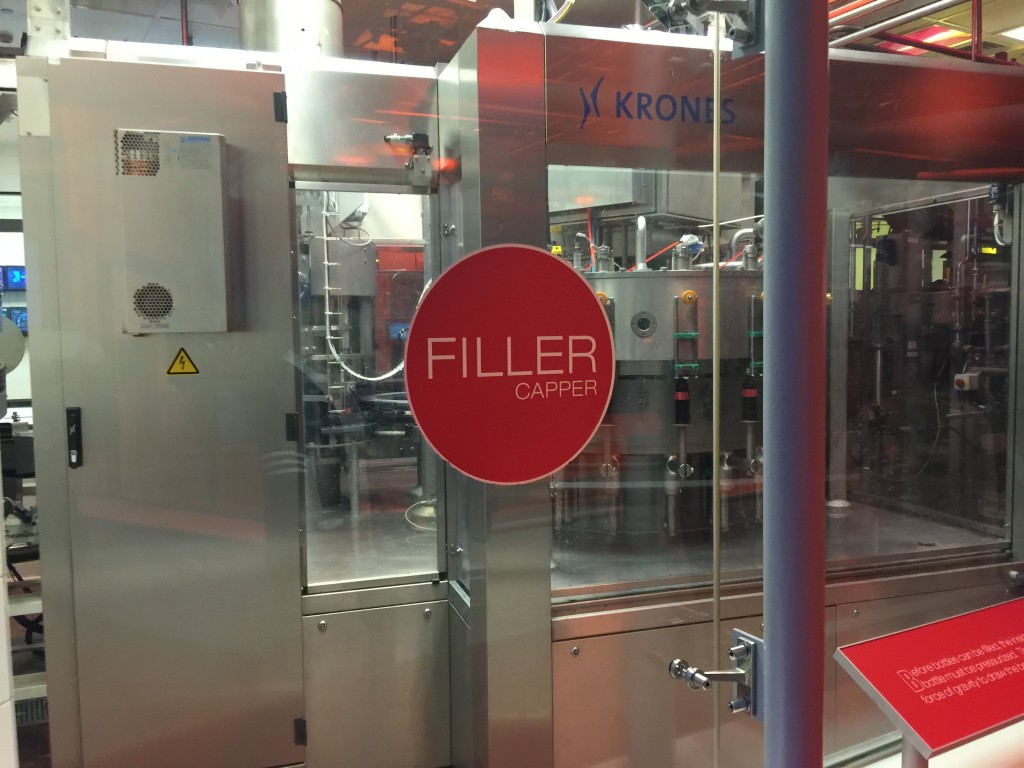
Automation really has changed the world. This would have required an army of factory workers at one point but now it’s almost completely self-running.
Case in point … look at one of the original carbonated bottling machines from another exhibit:
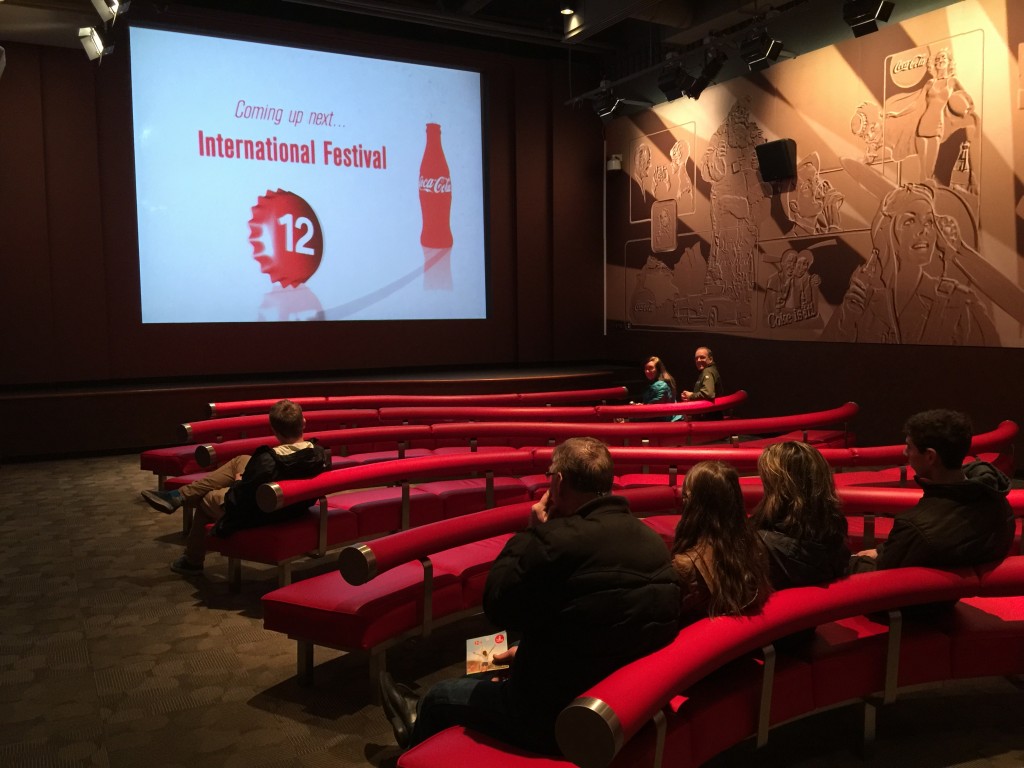
They had a theater where you could watch advertisements from the company’s 125 year history from around the world.
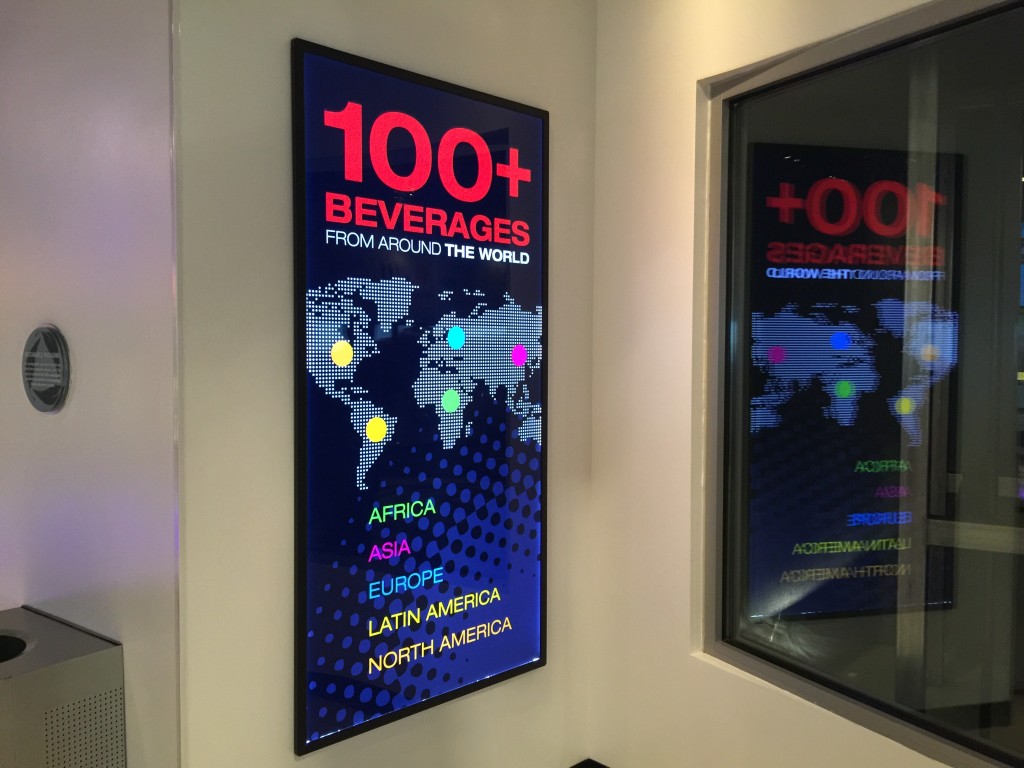
We couldn’t wait any longer so we headed for the Taste It exhibit, which features 100 different Coca-Cola products from around the world.
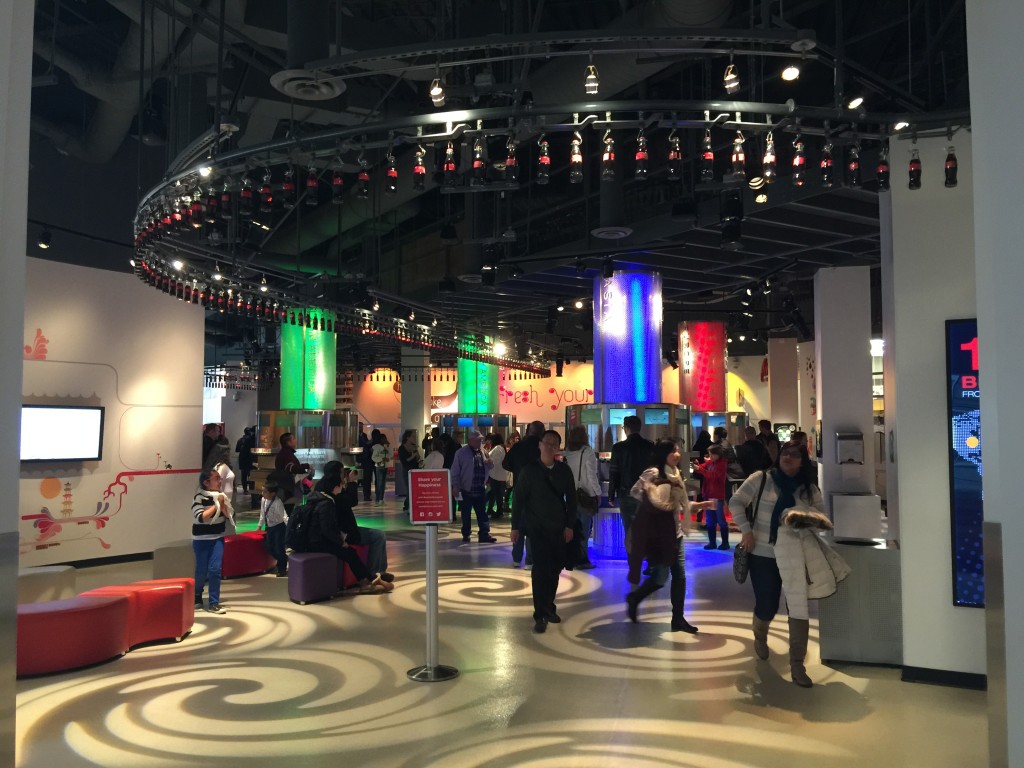
Each of those pillars coming down from the ceiling represents a different continent. They are surrounded by soda fountains featuring beverages Coke sells in nations on that continent. Including tap water, Coke now has 3.5% market share of all beverages consumed by humans in any given day. Notice the bottles coming from overhead. They were from the bottling room we saw earlier and you’ll get to take one before you leave.
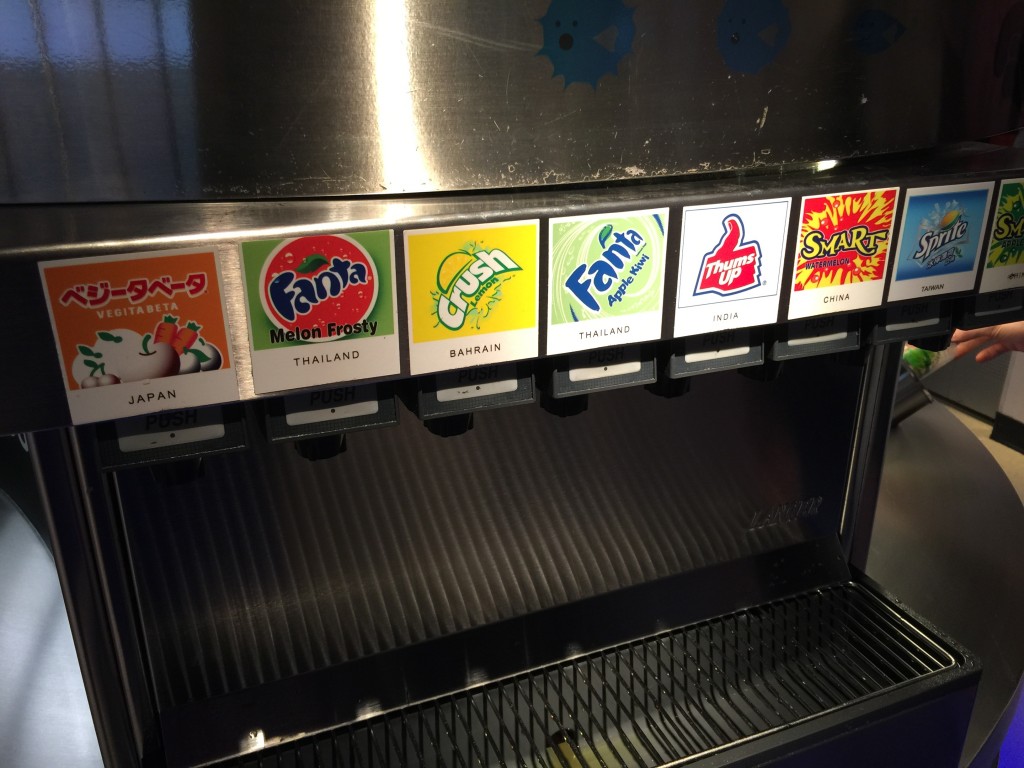
The Asian Coca-Cola brands were probably our favorite. I really like the Japanese Vegitabeta and the Fanta Melon Frosty from Thailand. The Thumbs Up from India was weirdly spiced. I’ve never had anything quite like it.
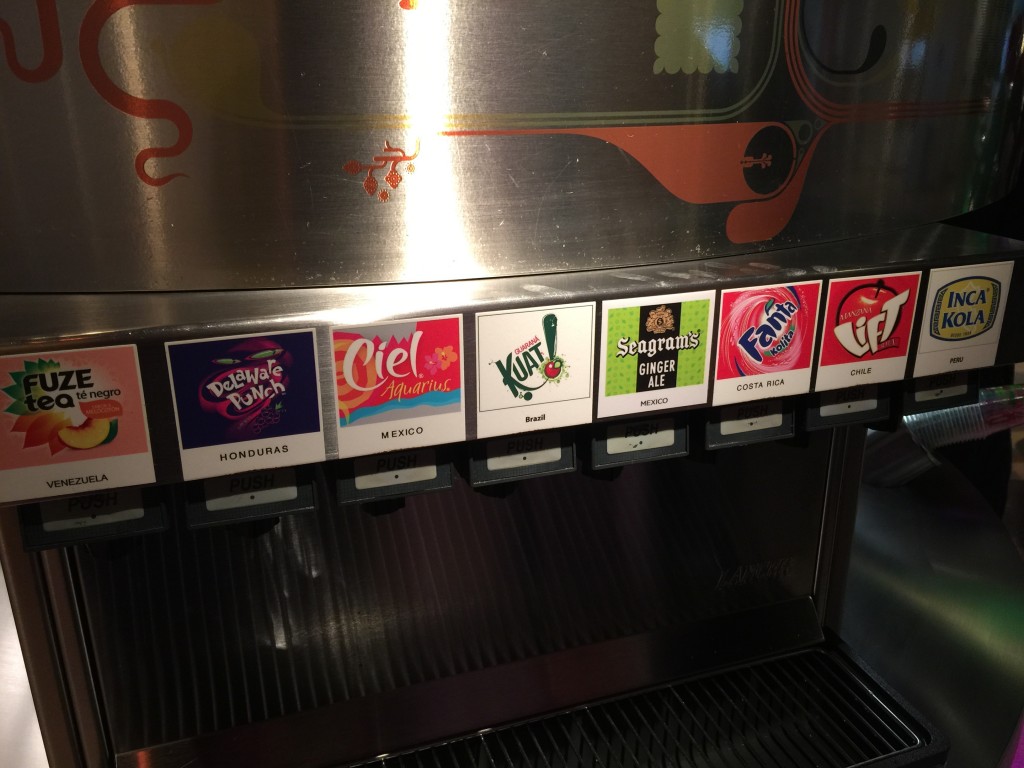
The Latin American flavors were okay but there were a few standouts. I really liked the Fuze Tea from Venezuela. Though, at this point, it’s not like the sales are doing Coke any good. Chavez destroyed the country’s economic so completely and thoroughly, corporate America has basically written the currency off as worthless. It’s crazy the same script plays out time after time. A socialist comes to power, confiscates private property under the theory it should be collectively owned, and then the laws of economics kick in and they lose it all. Time after time. Without exception. Why can’t they just copy the Nordic model of private market capitalism combined with regulation and tax policies that prioritize investment in human capital? Steve Jobs is always going to be able to run a company like Apple better than some government bureaucrat can. Walt Disney is always going to be better at the startup game than some intern appointed because of his family’s political connection. It’s the nature of the universe. You ignore it at your own peril.
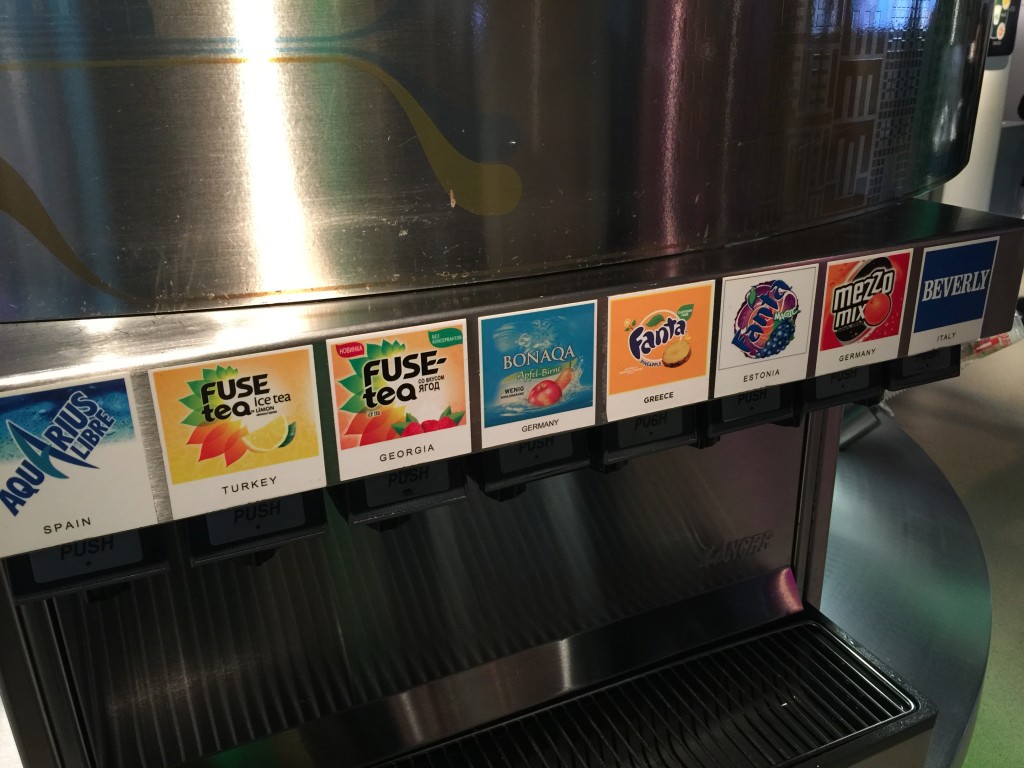
Europe … you crazy. Especially Italy. I had it before at the world of Coke in Walt Disney World Epcot but the Beverly beverage? No. You must have a masochistic streak to enjoy that assault on the tongue.
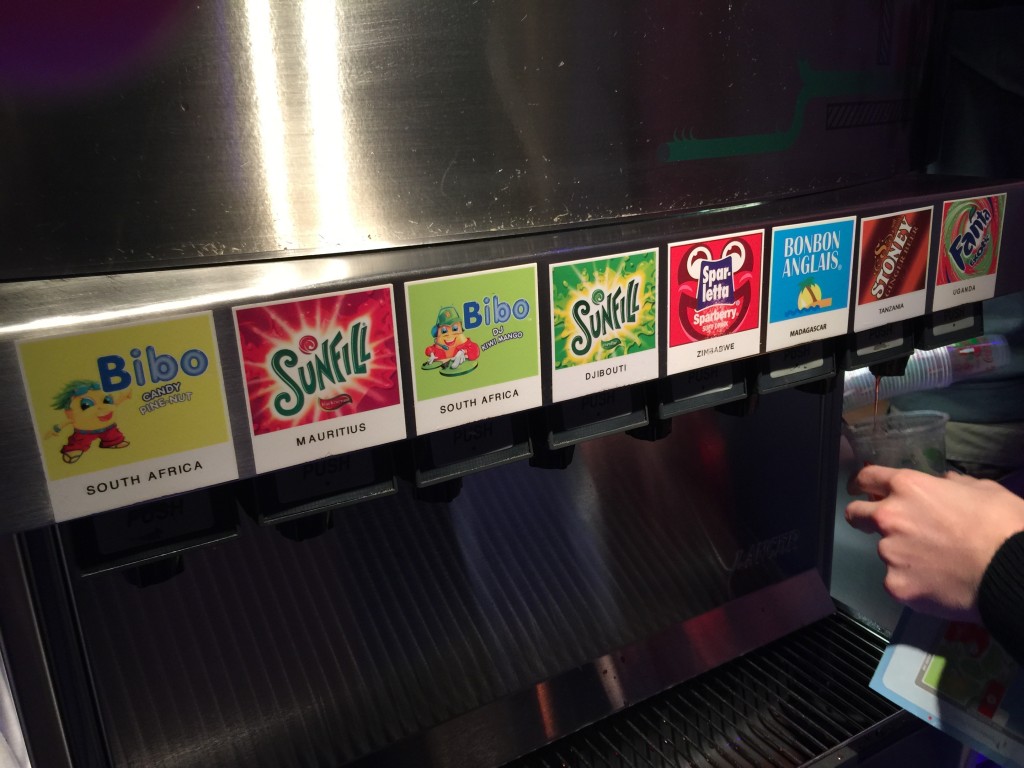
Africa was so sweet! I kind of like Bibo Candy from South Africa. It was like a sugar overload. It wouldn’t be something I could have very often but it was akin to a liquid pixie stix.
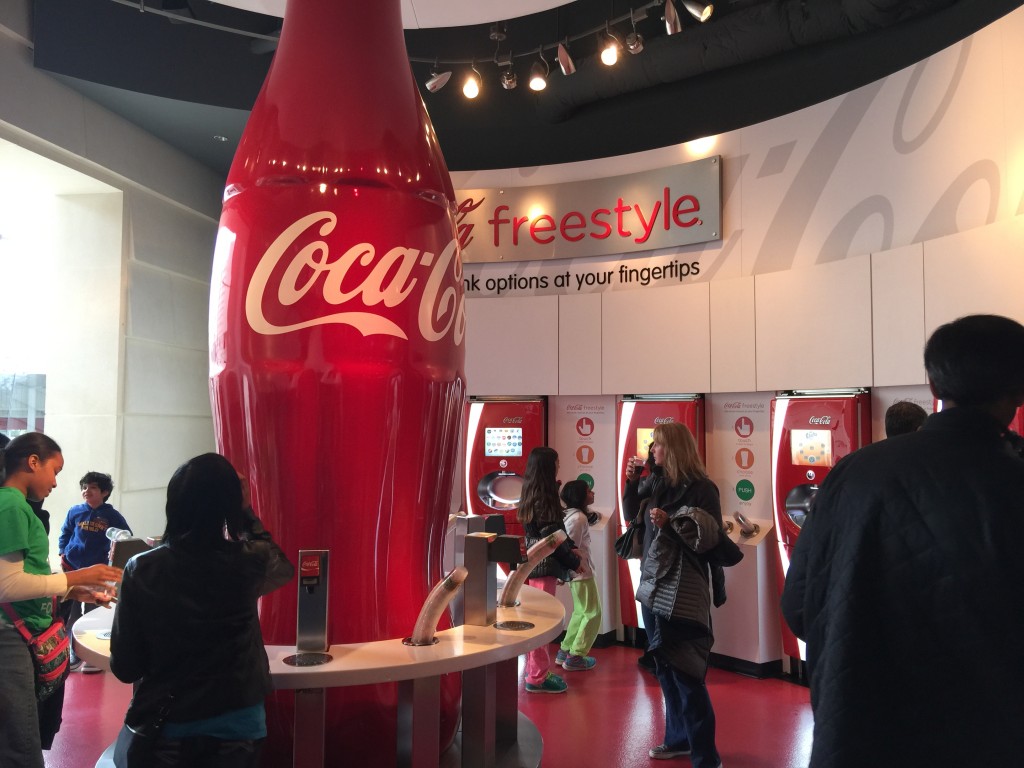
There was a Coca-Cola freestyle area, too, with plain Coke dispensers in the center. I like the original best, myself.
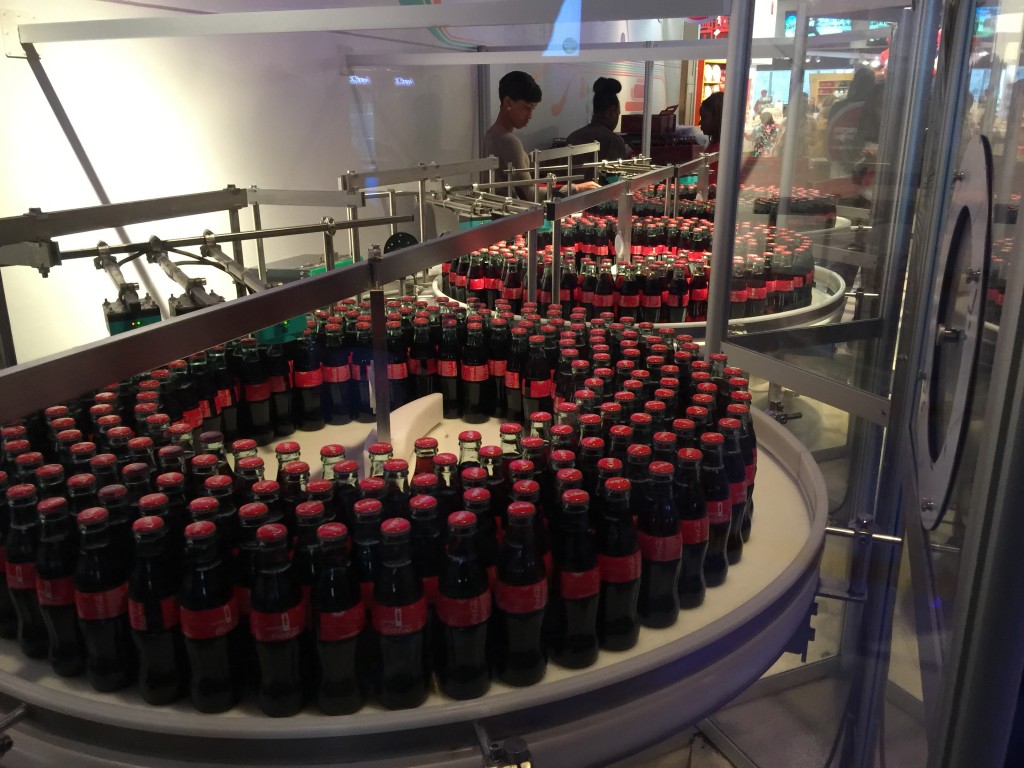
Later, at the end of the tour, after the tasting room, you see the efforts of the bottling operation and get to take one with you. The bottles were coming out overhead, circling around the tasting floor.
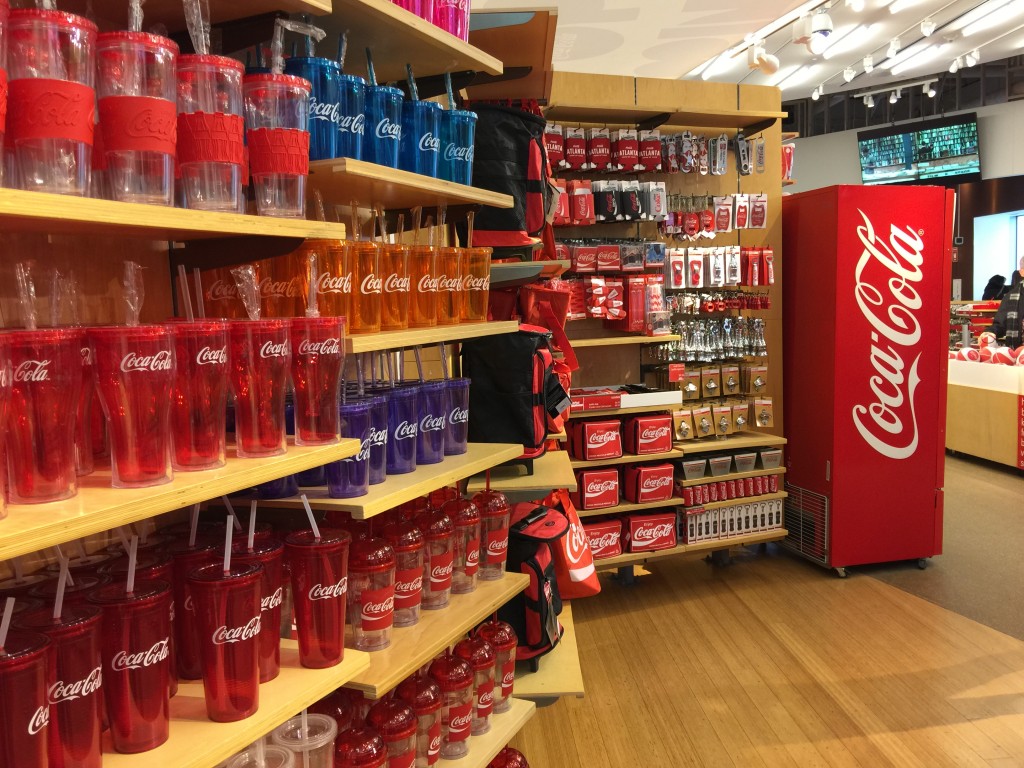
When you leave the exhibit, you enter the giant World of Coca-Cola retail store, which has a huge selection of everything from bottle openers to picnic supplies, board games to collectibles, clothing to glassware. It’s magnificent.
These were my favorite. We are picking up a bunch on our way back home when we come through Atlanta, again … or we might order them online, instead, to avoid having to carry them with us.
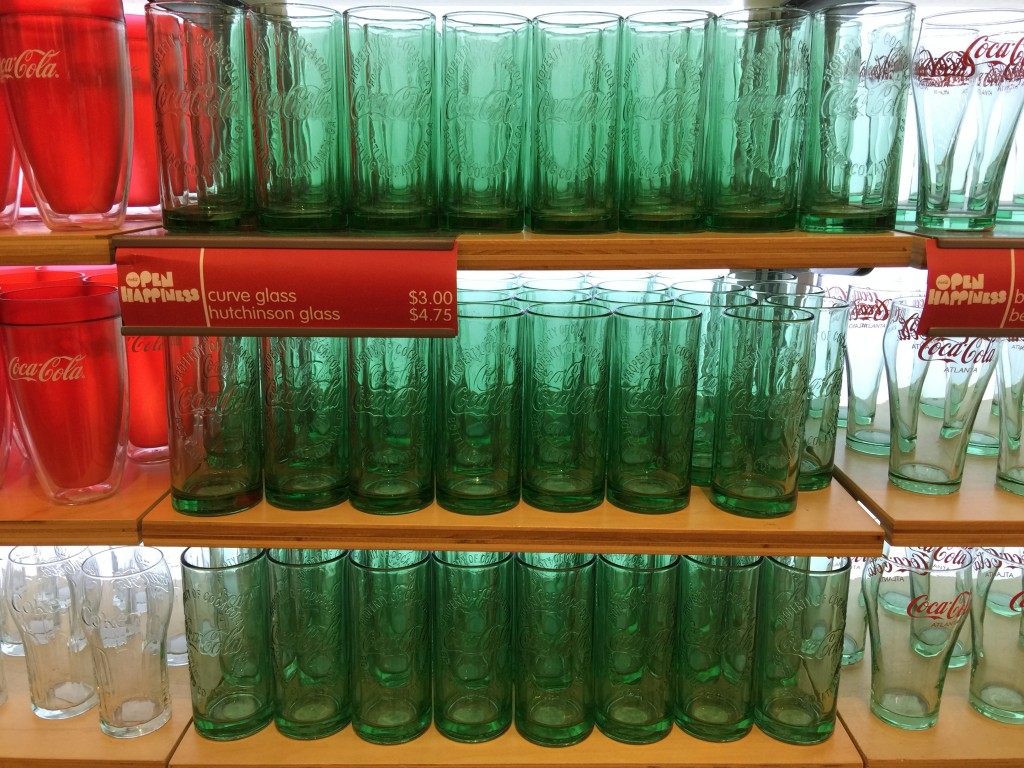
The Coca-Cola Hutchinson glasses were our favorites. These things are heavy, wonderfully weighted, and an awesome old-school color. They’ll be great chilled in the refrigerator and used to serve ice cold Coca-Cola.
I can’t ever imagine wanting to work for someone else but being the CEO of The Coca-Cola Company is one of the few exceptions to that rule. I love the business so much, and feel like it is such an important part of history, that it would be almost akin to being a trustee of a great cultural artifact.
[mainbodyad]


